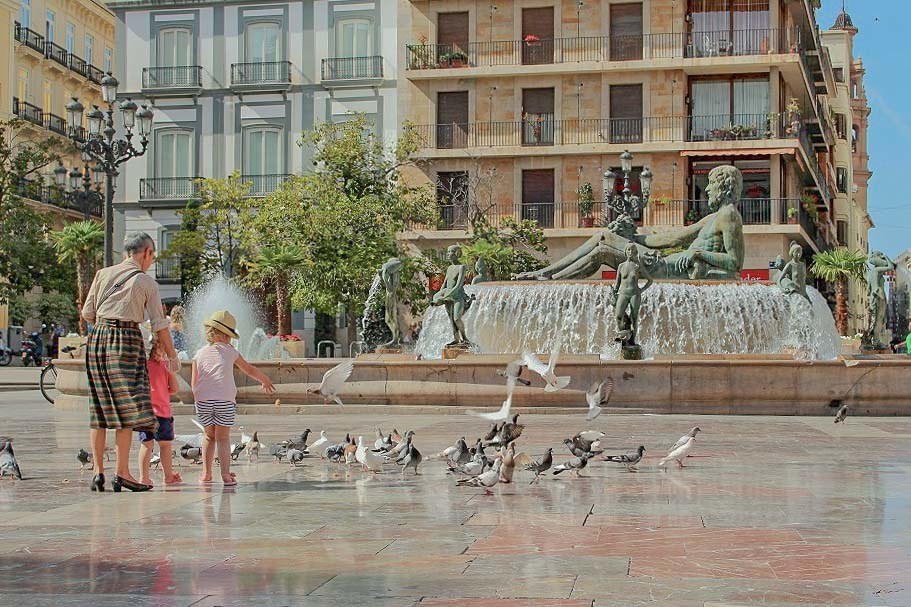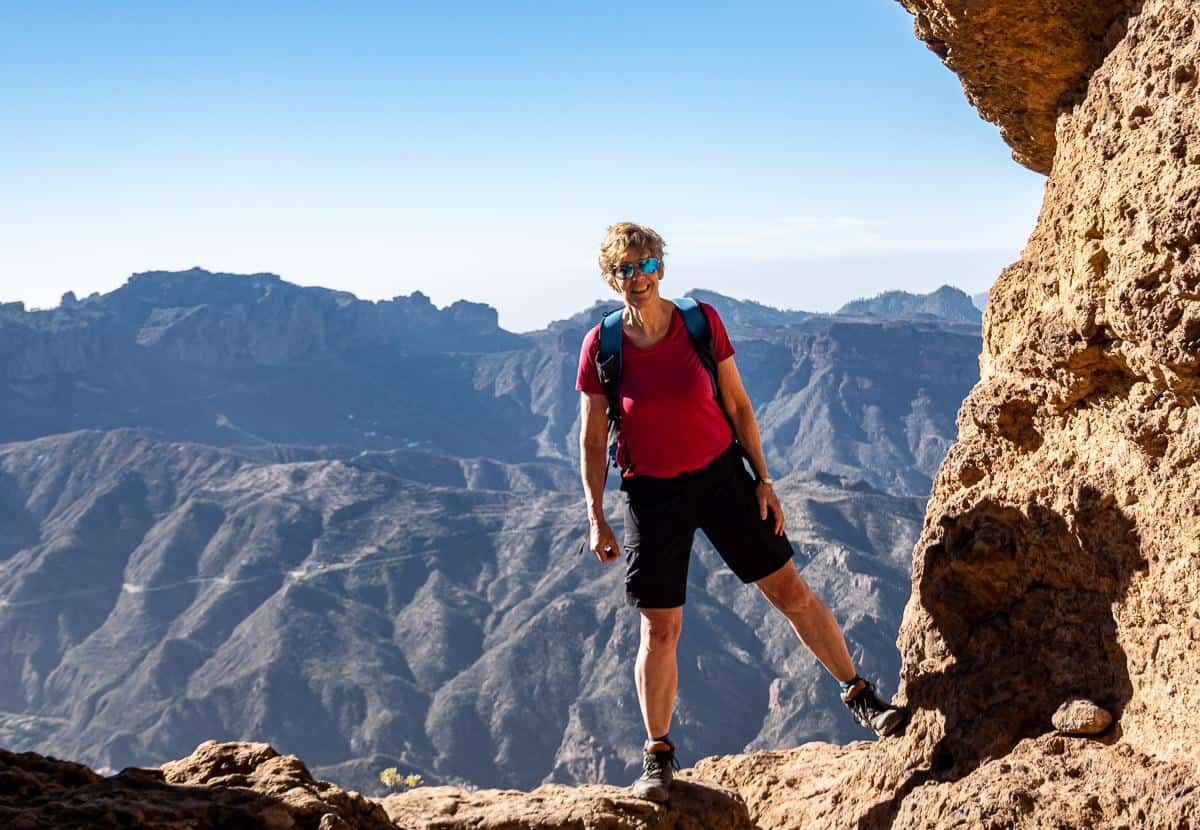Iconic Ireland Landscapes and Where to Find Them
18 min read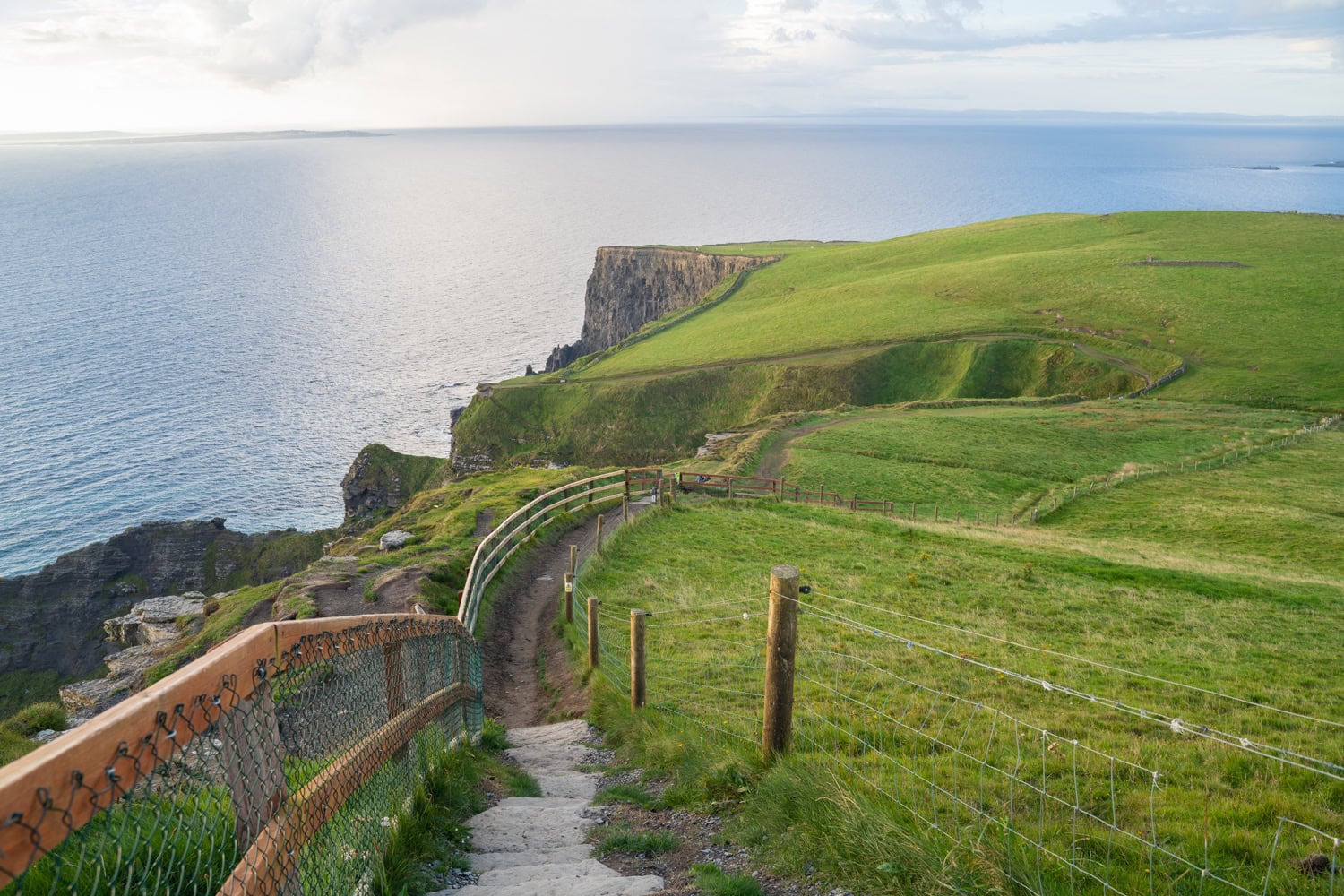
Table of Contents
Ireland is a land of enchanting landscapes and captivating folklore. Its allure lies in its seamless blend of history and natural wonders.
From majestic cliffs and mountains to lush green valleys, we’ll explore the diverse natural wonders of this enchanting country. Learn the secrets behind its verdant hue and unravel why Ireland beckons travelers from across the globe to witness its breathtaking beauty firsthand.
In this post, I’ll describe the diverse Ireland landscapes, including how they were formed or some fun facts, and tell you exactly where to go in Ireland to see them. This is all based on my numerous trips to Ireland and the small group hiking tours I offer there.
What Kind of Landscapes Does Ireland Have?
As you’ll see, the Ireland landscape is varied. There are many reasons to fall in love with Ireland – and views like these are only the tip of the iceberg.
- Green Countryside
- Cliffs and Coastlines
- Ancient Bogs
- Mountains
- Lakes and Rivers
- Forests and Woodlands
- Historic Castles
- Empty Sandy Beaches
- Karst Landscape
Welcome to a scenic journey through the captivating world of Ireland’s landscapes!
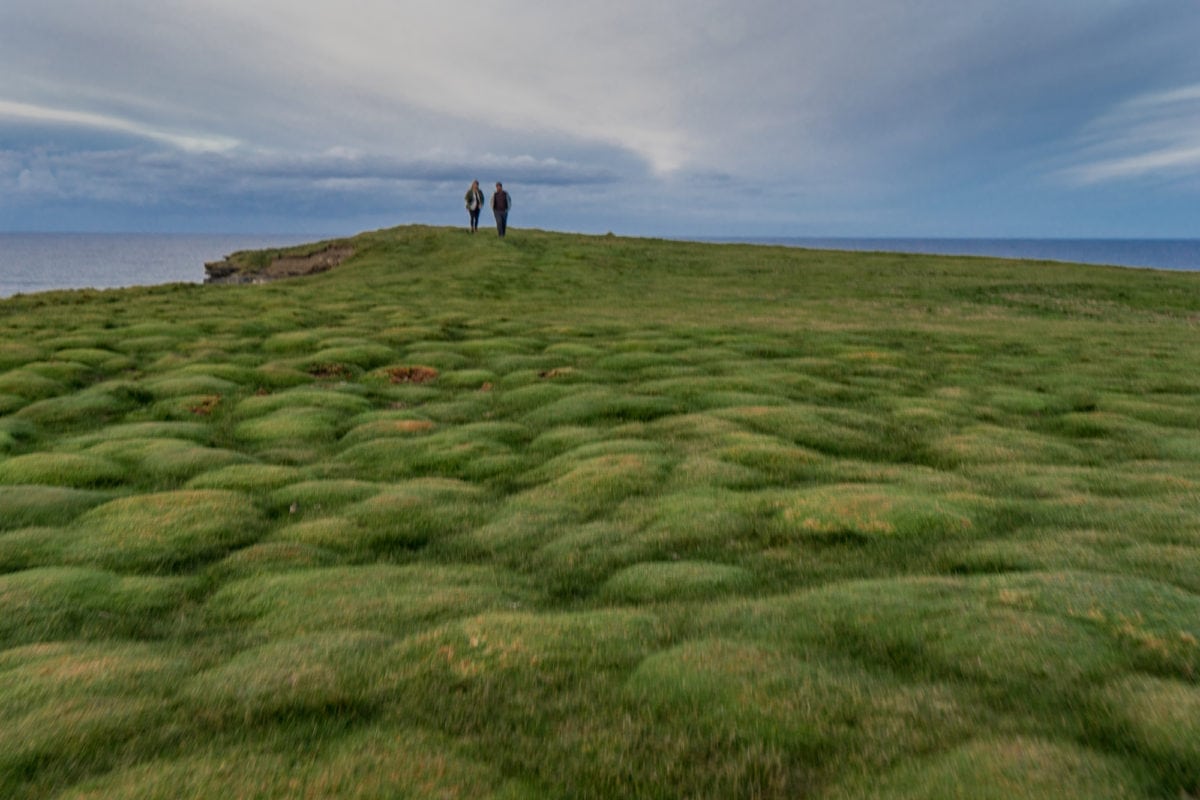
Green Countryside
Ireland is famous for its lush green countryside, with rolling hills, meadows, and pastoral landscapes. Agriculture has been a significant part of Ireland’s economy and culture for centuries, and raising livestock and cultivating crops has led to the maintenance of its lush green fields and pastures.
Those visiting Ireland may wonder why Ireland is SO green. The short answer is Ireland experiences abundant rainfall due to its geographical location, proximity to the Atlantic Ocean, prevailing westerly winds, mountainous terrain, and temperate maritime climate.
All these factors combined create the iconic image of Ireland’s rolling green hills and verdant landscapes, earning it the nickname “The Emerald Isle.” The country’s natural beauty, marked by its green scenery, has become one of its most celebrated and enchanting features, attracting visitors from all over the world.
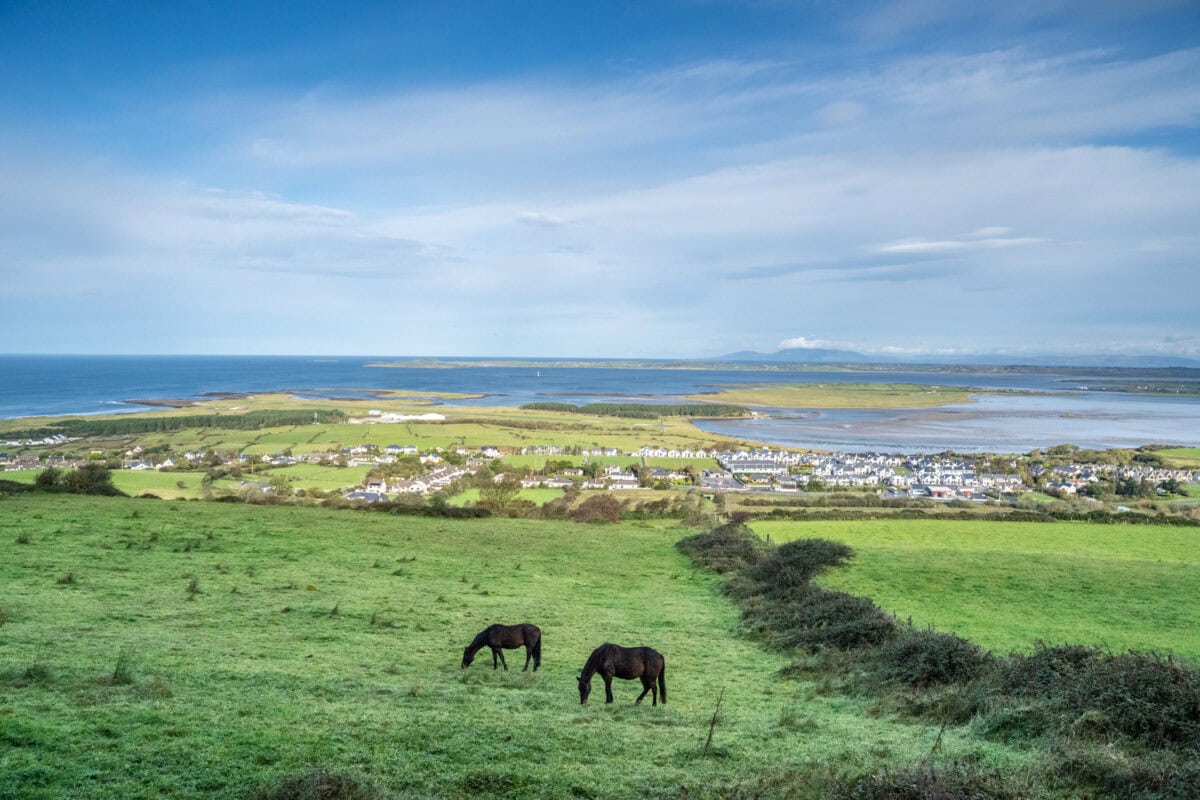
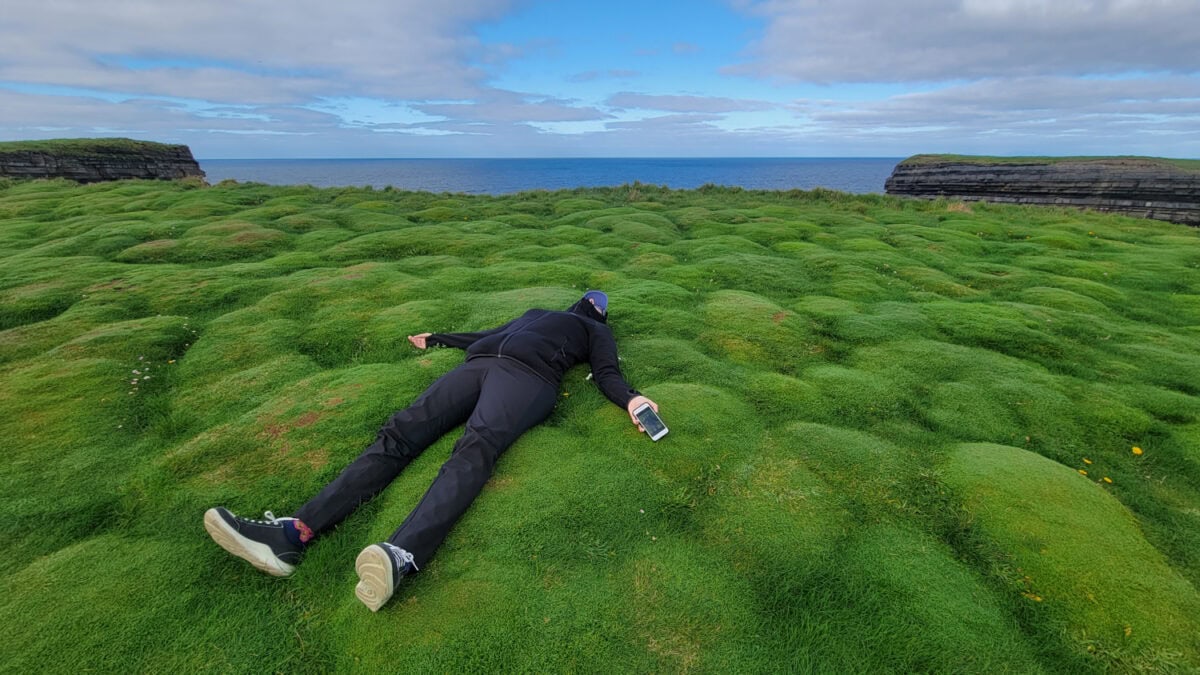
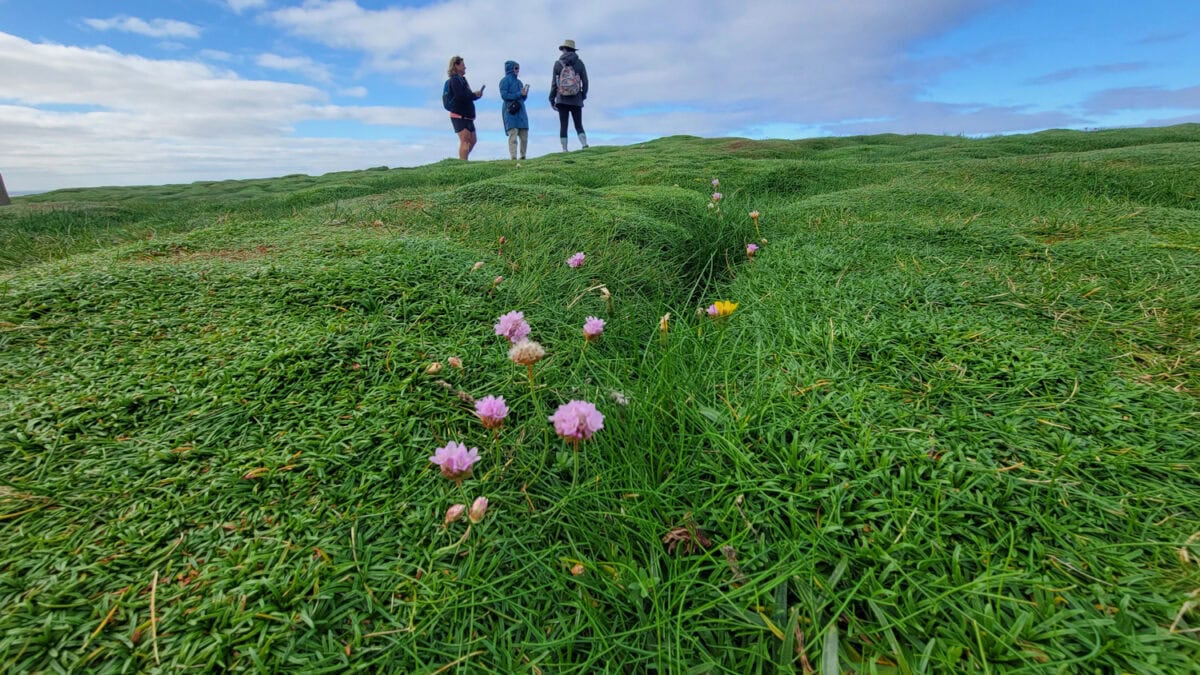
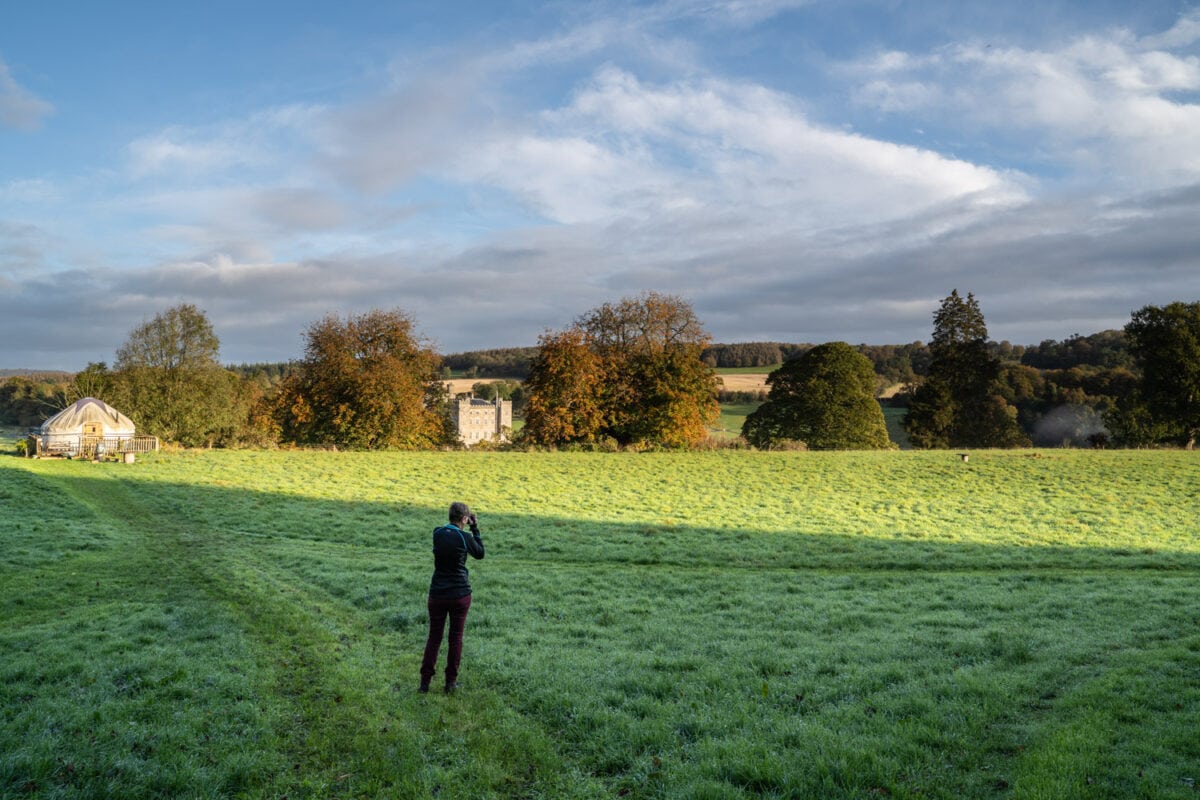
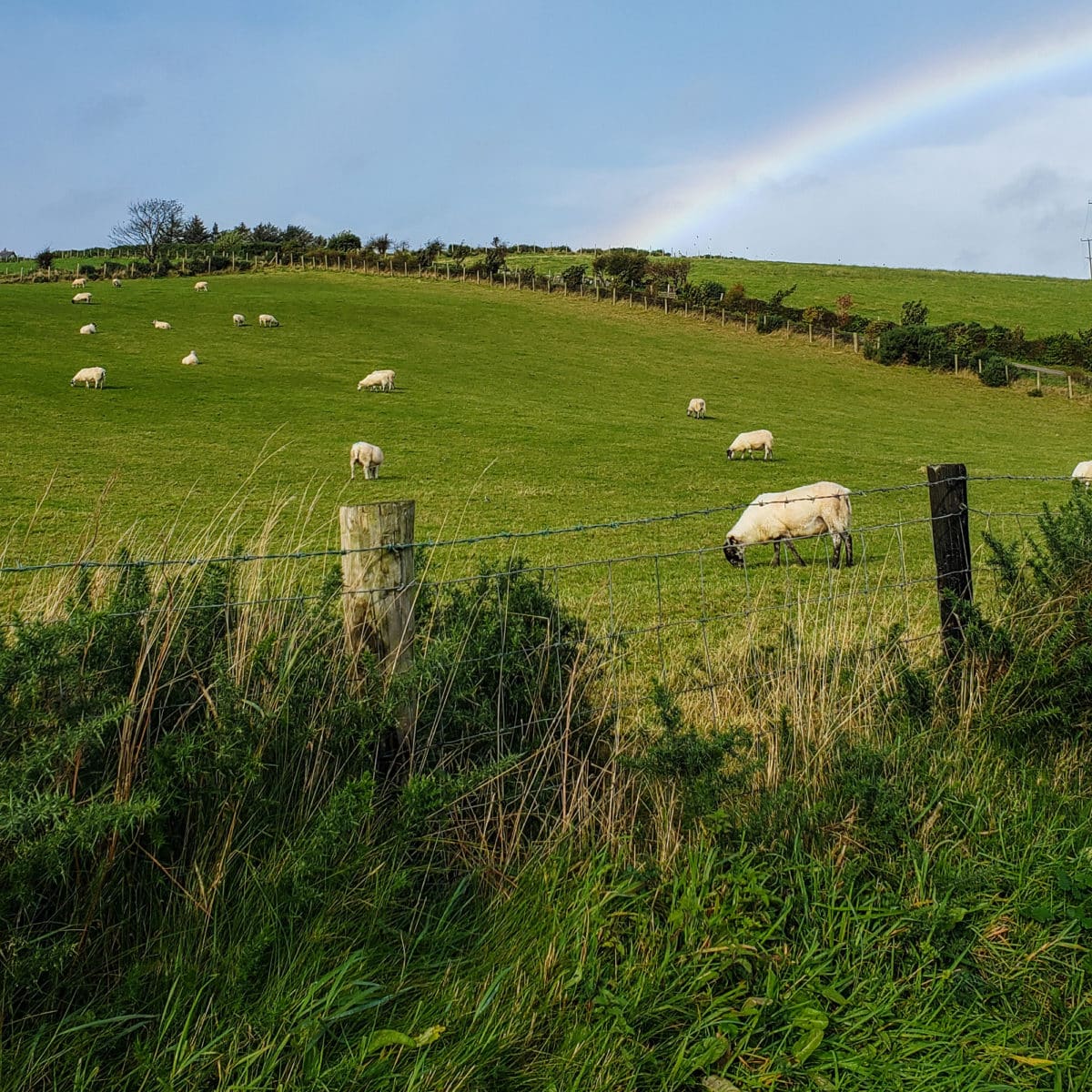
Best Places to See Rolling Hills in Ireland
Boyne Valley in County Meath is the perfect place for fields and hills of green! And right in the heart of the Boyne Valley is Rock Farm. This is one of my favorite places to visit rural green landscapes.
It’s a bit off-the-beaten-path, which is also probably why I love it! Located on the outskirts of the village of Slane, you’ll find this beautiful property that is a large organic farm and a glamping site. The glamping yurts are nestled among sycamore, oak, ash, chestnut, and hawthorn trees, forming natural enclosures around the yurts and shepherd’s huts. This grove is surrounded by an undulating wild green meadow with an open green flat pasture below perched on a ledge of green land overlooking the turrets of the infamous Slane Castle. You’ll be on green overload!
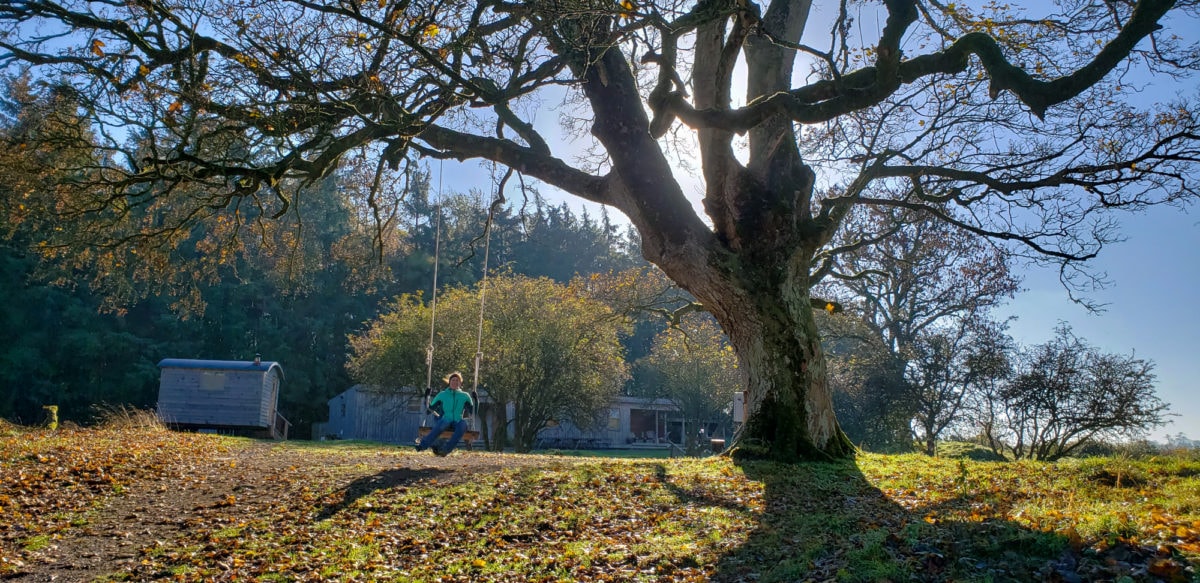
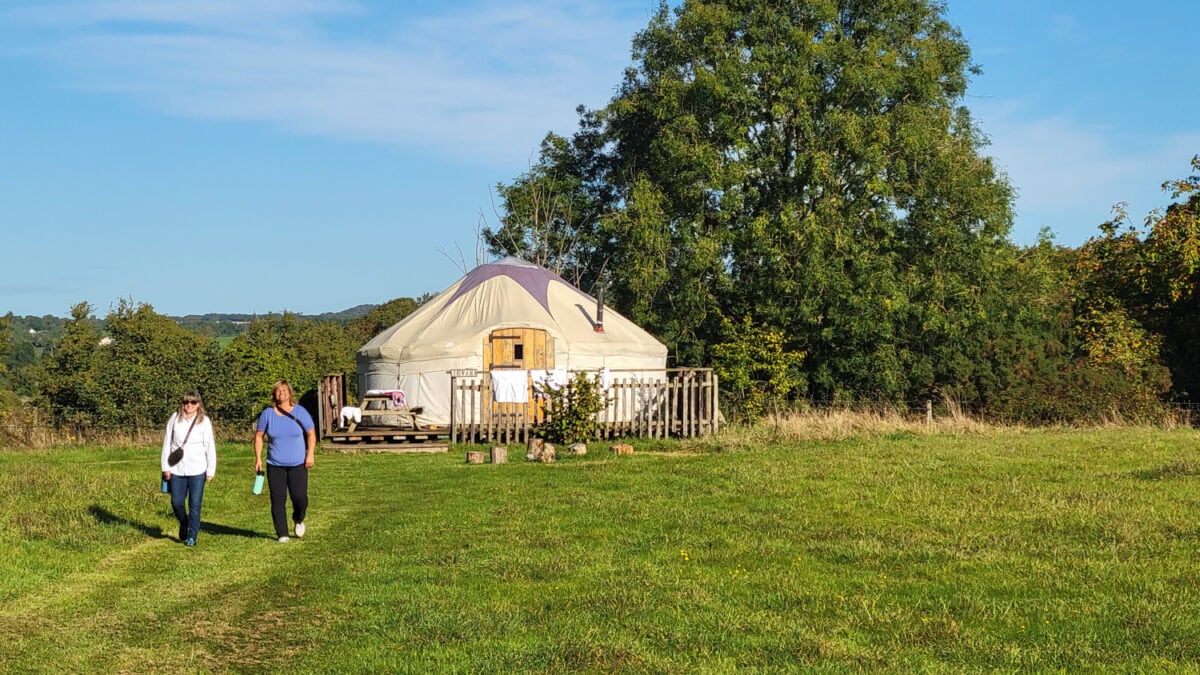
Additionally, you can do a farm tour and enjoy the local farmers markets at the farm.
Killarney National Park is a green paradise! The National Park offers a wide variety of options for walking, from lake and wooded walks to mountains and hikes to waterfalls in the woods. You can also visit the nearby Muckross House, its gardens, and an old abandoned abbey nearby. The 19th-century house and landscaped gardens are a national treasure and not to be missed.
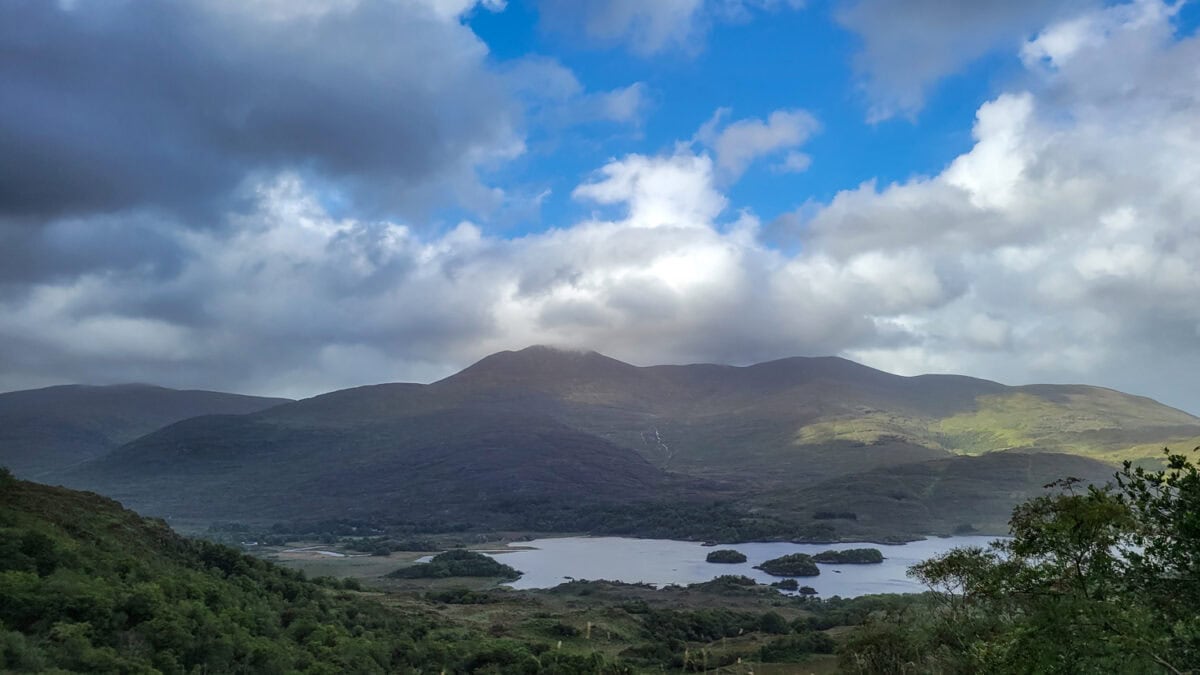
Known as the “Garden of Ireland,” County Wicklow is a haven of rolling green hills, forests, and glens, with attractions like Glendalough and the Wicklow Mountains.
Cliffs and Coastlines
The country’s rugged coastlines are adorned with towering cliffs offering breathtaking views of the Atlantic Ocean. Ireland’s cliffs and coastlines were formed over millions of years through various geological processes, like erosion, glaciers, faulting and uplift, ancient volcanic activity, sedimentation, and karst processes.
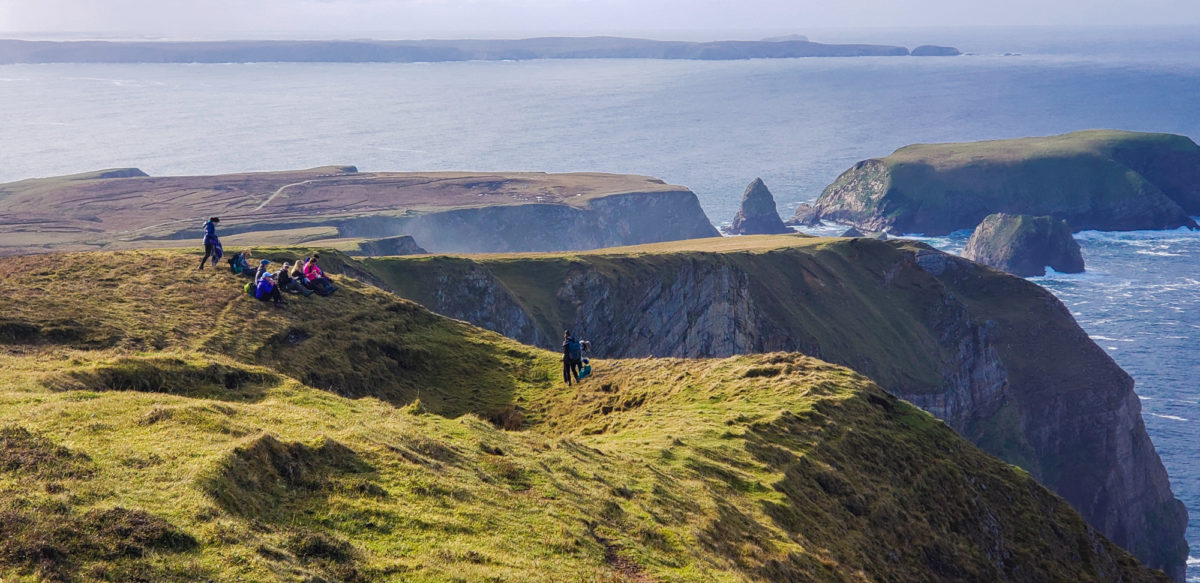
Best Cliffs and Coastlines to See in Ireland
Perhaps the most iconic landmark in Ireland is the Cliffs of Moher. It rises dramatically from the Atlantic Ocean reaching heights of up to 214 meters (702 feet) and offers unparalleled views of the sea and the Aran Islands.
However, iconic landmarks mean lots of crowds. The best way to experience the Cliffs of Moher while getting away from the crowds is to go for sunset and do the hiking trail along the cliffs. This trail is part of the Burren Way. Also, note that you must pay a fee to park and view the Cliffs of Moher.
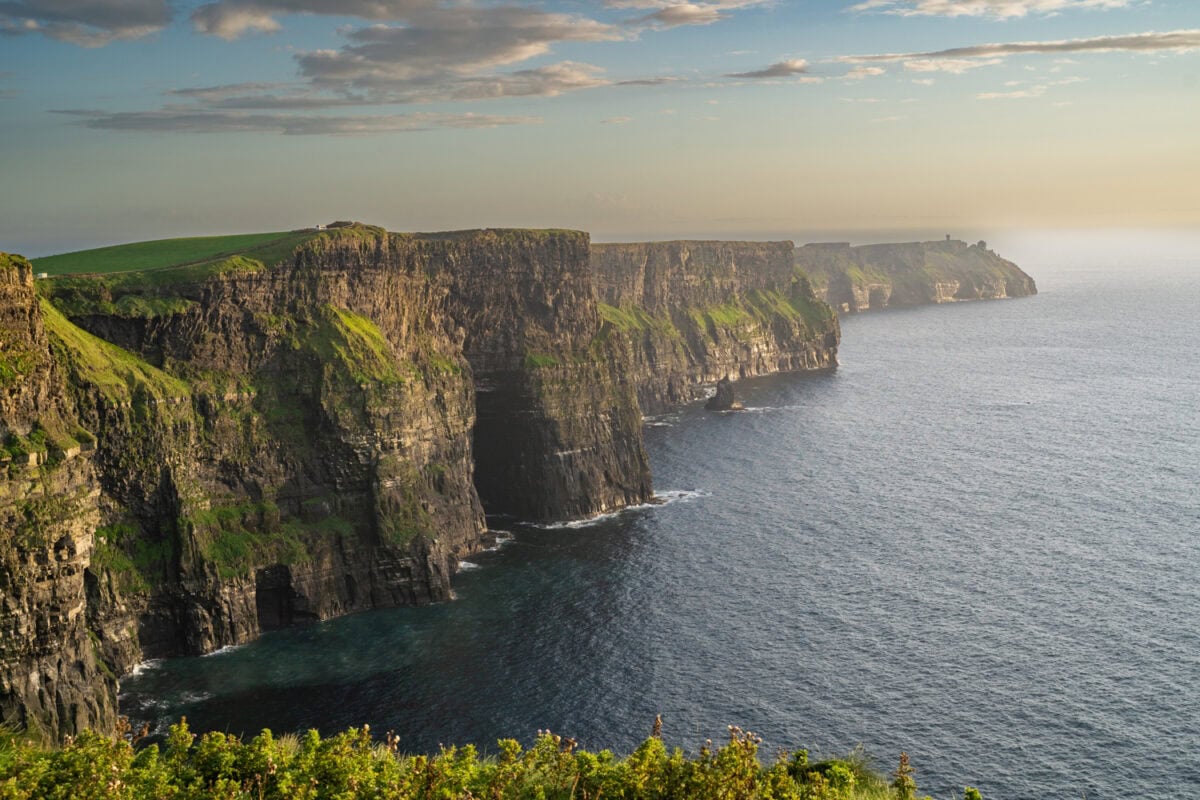
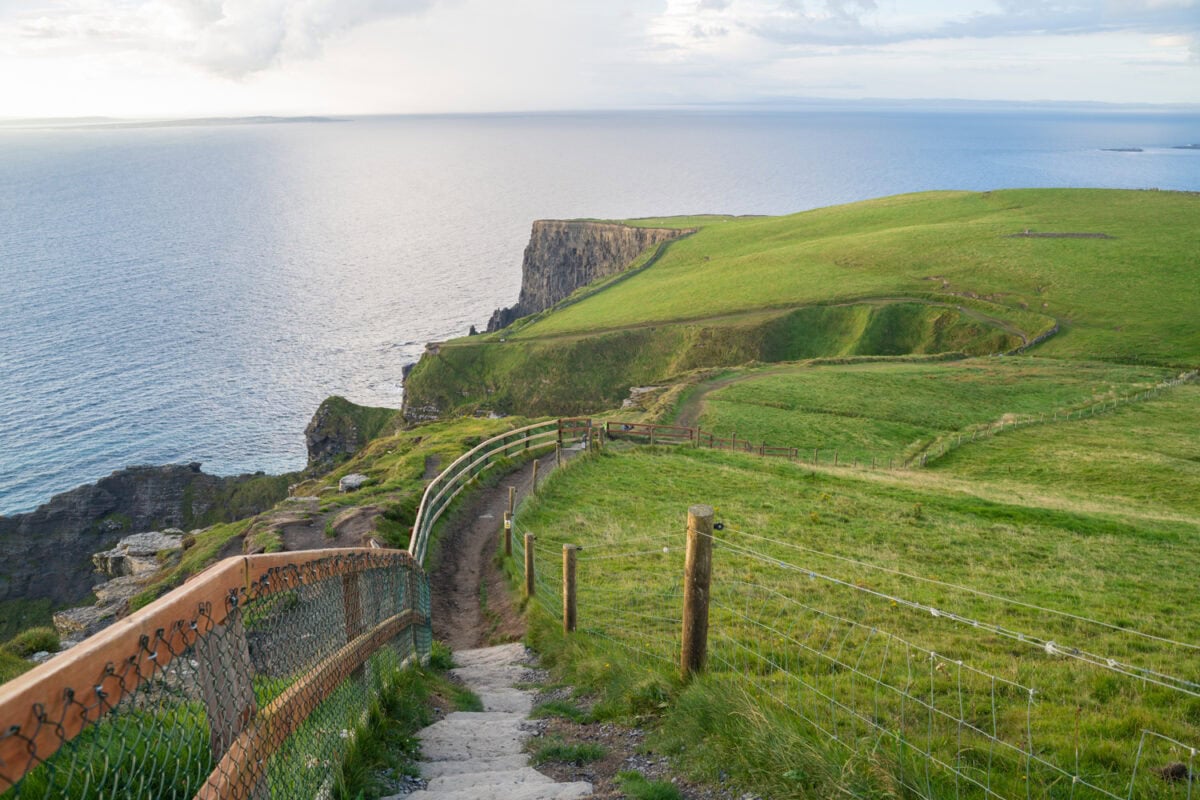
Another of the most well-known of Ireland’s landscapes, the Giant’s Causeway in County Antrim, Northern Ireland, is an example of ancient volcanic activity.
The lesser-known Slieve League cliffs are among the highest sea cliffs in Europe, standing at approximately 601 meters (1,972 feet), providing awe-inspiring vistas of the Atlantic Ocean.
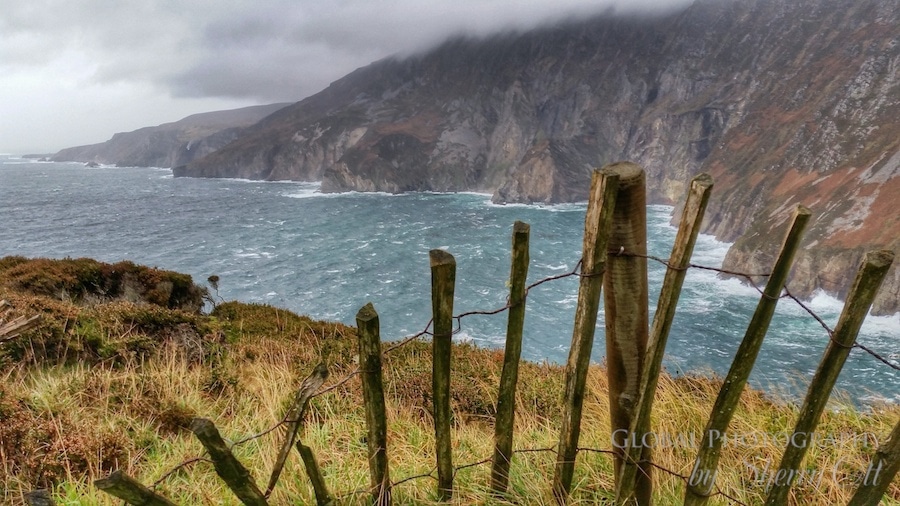
Slea Head Drive in County Kerry offers stunning views of coastal cliffs, golden beaches, and the Blasket Islands, making it a must-visit location on the Dingle Peninsula.
Old Head of Kinsale in County Cork. Located at the southern tip of Ireland, this rugged headland boasts captivating coastal cliffs and panoramic views of the Celtic Sea.
One of my favorite cliff viewpoints in Ireland is along the Ring of Kerry. The Kerry cliffs near the tiny village of Portmagee stand over 1000 ft above the wild Atlantic and were formed in a desert environment 400 million years ago. There’s a nice path out to the viewpoints (look for the lamas along the path!) where you can sit and enjoy the view, the powerful waves below, and bird watching. There is a small fee to visit the Kerry Cliffs.
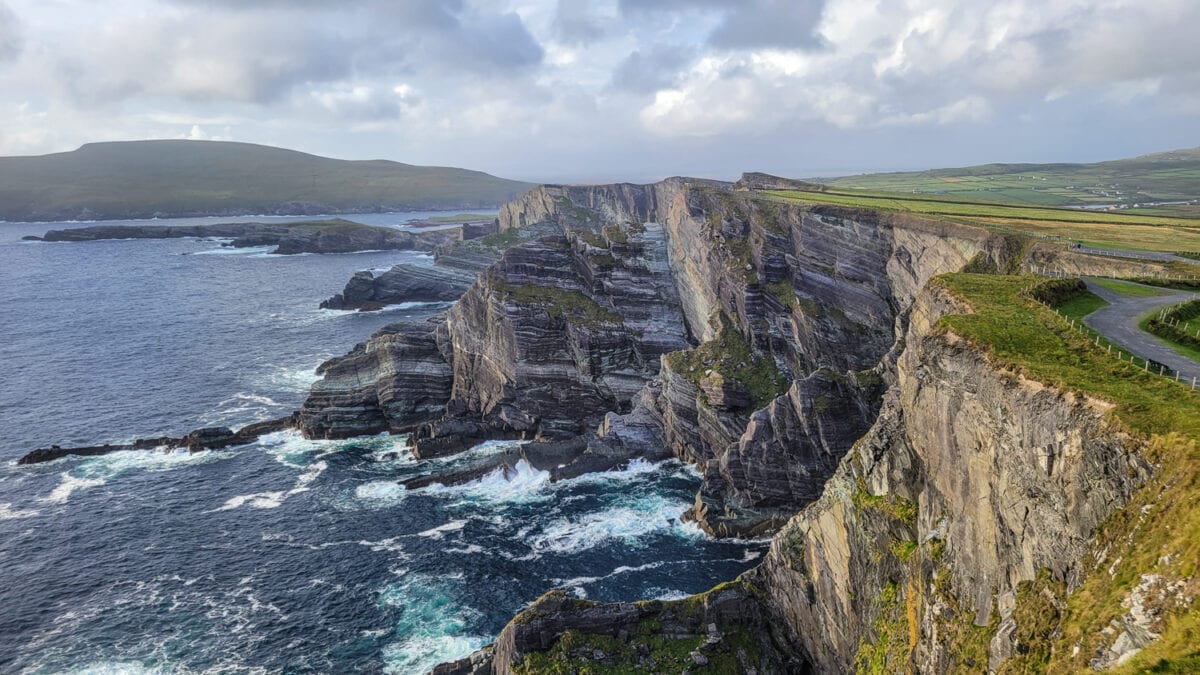
Finally, you can’t beat Downpatrick Head in County Mayo. It’s located near Ballycastle village along the Wild Atlantic Way. Here, you’ll find the typical dramatic cliffs and crashing sea – as well as a sea stack (‘Dun Briste’) that was thought to have broken away from the mainland in 1393. At the sight, you’ll also find a statue of Saint Patrick and a small stone building, used as a lookout post during the Second World War with its stone aerial markers: EIRE 64.
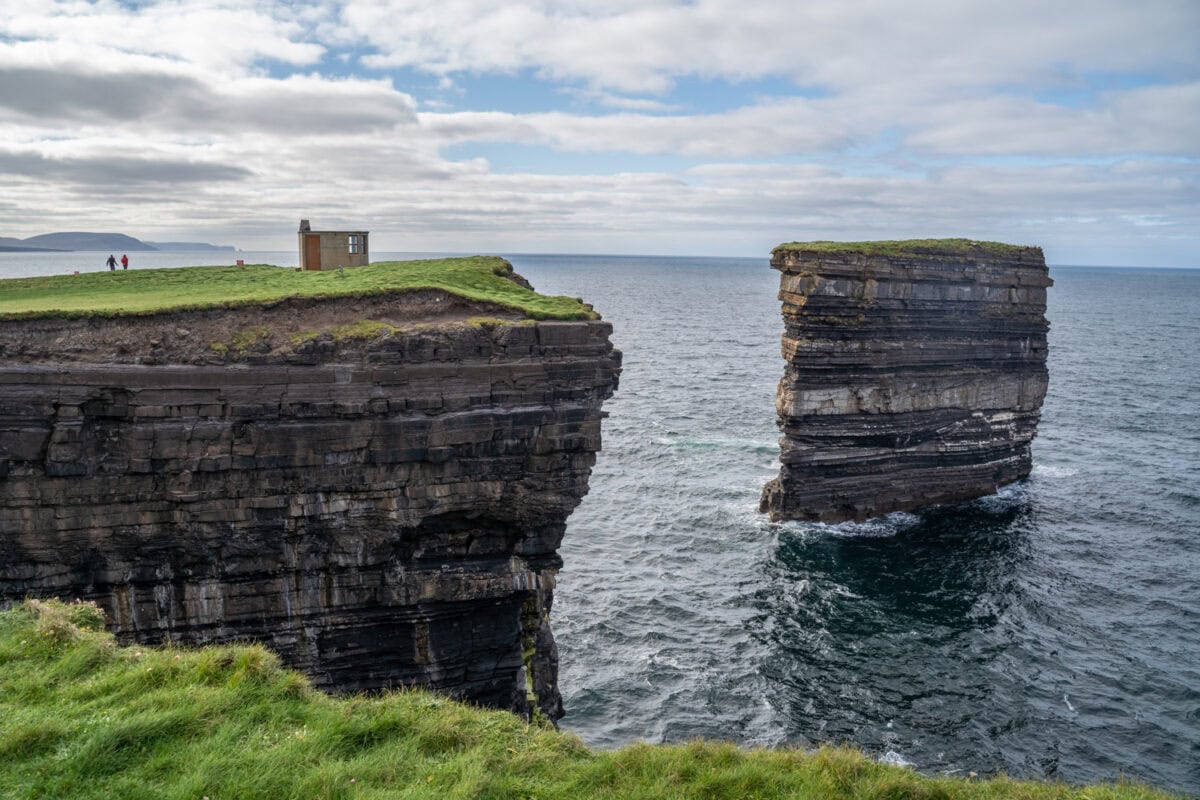
Ancient Peat Bogs
Ireland is home to extensive peat bogs, preserved over thousands of years and contributing to its unique ecological landscape. Peat bogs are partially decomposed plant matter and are prevalent in certain regions, adding to the richness of the landscape.
When visiting peat bogs, respecting these delicate ecosystems and following any guidelines or restrictions to preserve their beauty and ecological significance is essential.
Ireland’s bogs are more than just a unique landscape; it’s also a landscape that preserves things – like butter. One widespread theory is that food was buried in bogs to hinder spoilage. Being cool, low oxygen, and highly acidic environments, peat bogs have excellent preservative properties. In addition to bog butter, they have also found wonderfully preserved bodies in ancient peat bogs! Those are on display at the National Museum of Ireland.
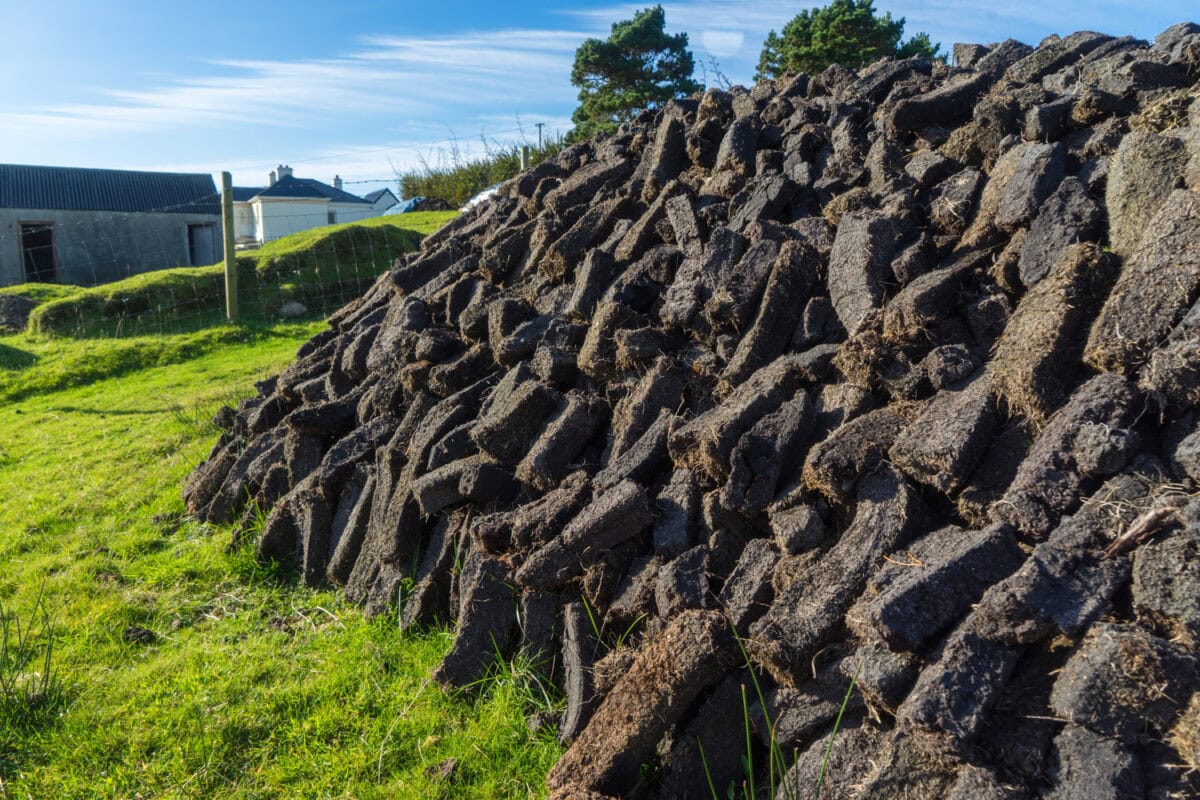
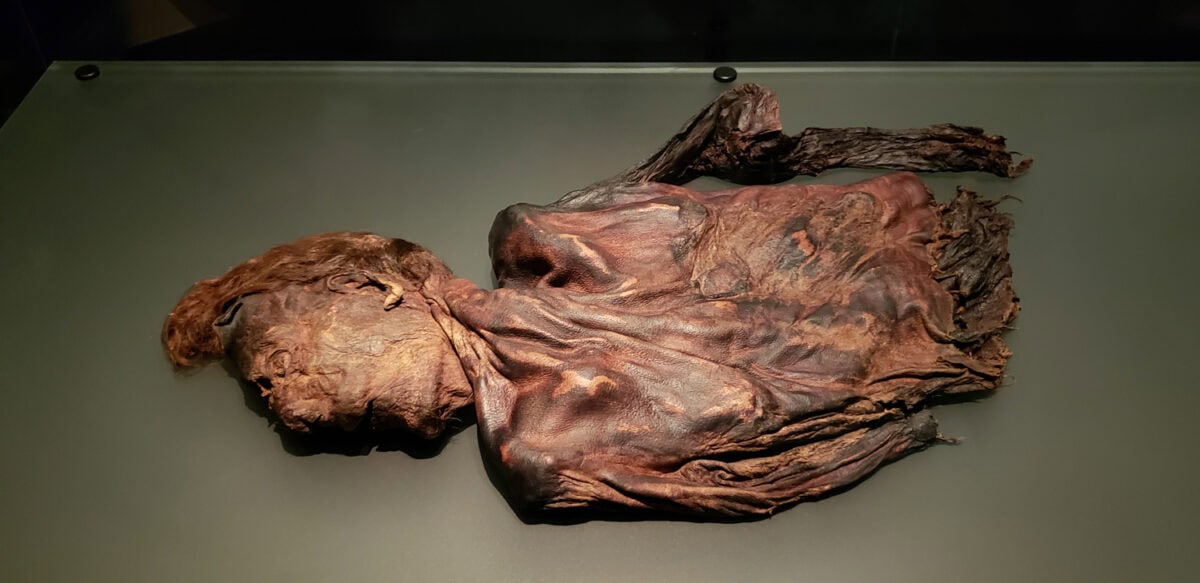
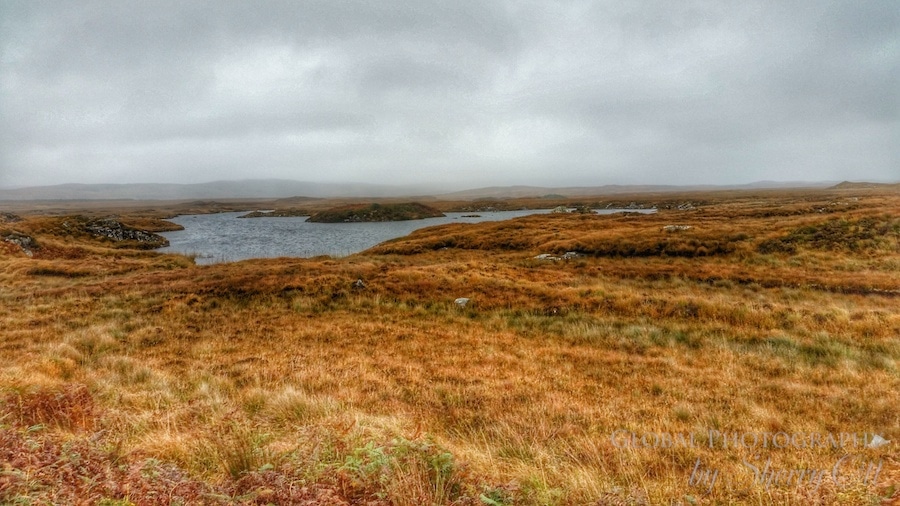
It’s also good to know that bogs are protected habitats under European and Irish Law. Intact bogs, actively forming peat, play an important role in combating climate change by removing excess carbon dioxide from the air and placing it into long-term storage for thousands of years. The Irish bog landscape is fascinating, isn’t it?
Best Places to See Peat Bogs in Ireland
- The Burren, County Clare: Besides its unique karst landscape, the Burren is also home to some small peat bogs, adding to the area’s ecological diversity.
- Connemara, County Galway: The boglands of Connemara, particularly in the western part of the region, offer a chance to see peat bogs amidst the rugged landscapes.
- County Offaly: The Bog of Allen, located in County Offaly, is one of Ireland’s largest peat bogs and is an essential part of the Midlands region.
- County Roscommon: The Curlew Mountains in County Roscommon are known for their scenic peat bogs.
- County Donegal: Several areas in Donegal, such as the Derryveagh Mountains and the Glendowan Mountains, are home to peat bogs.
- The Ox Mountains, County Sligo: This range in County Sligo has some peat bogs interspersed with the mountainous terrain.
- County Kerry: The Slieve Mish Mountains also feature peat bogs amidst their scenic landscapes.
Mountains
The country features several mountain ranges, including the Wicklow Mountains, the Galtee Mountains, and the Mourne Mountains, offering excellent hiking opportunities and stunning vistas.
While not as imposing as other mountain ranges, Ireland’s mountains offer a chance to explore the country’s amazing landscapes. Whether you’re an experienced hiker or seeking fantastic views, these mountainous regions in Ireland have much to offer.
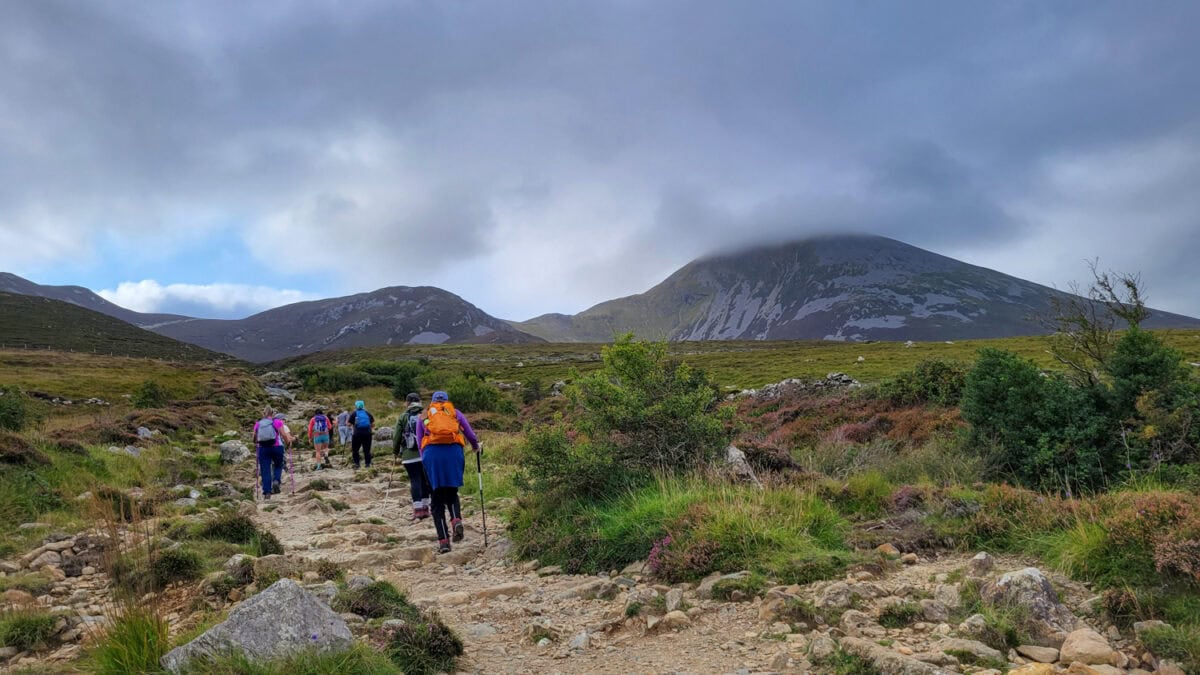
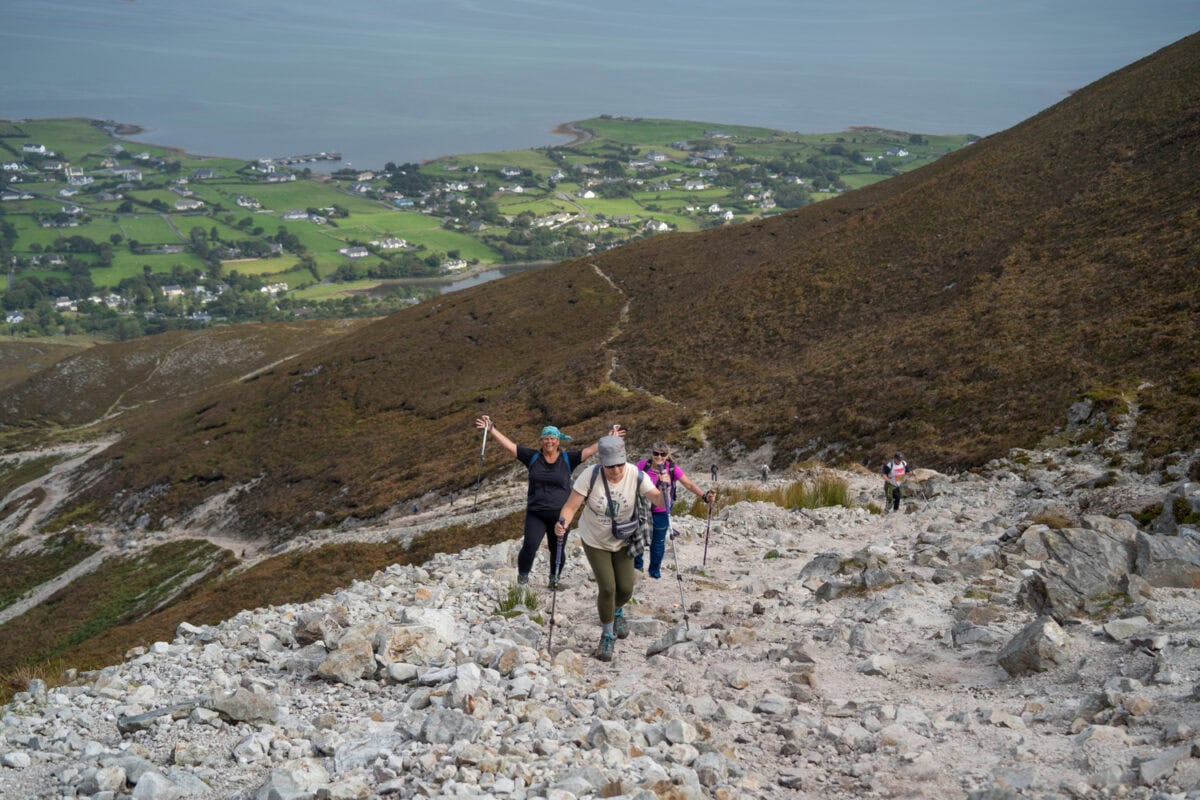
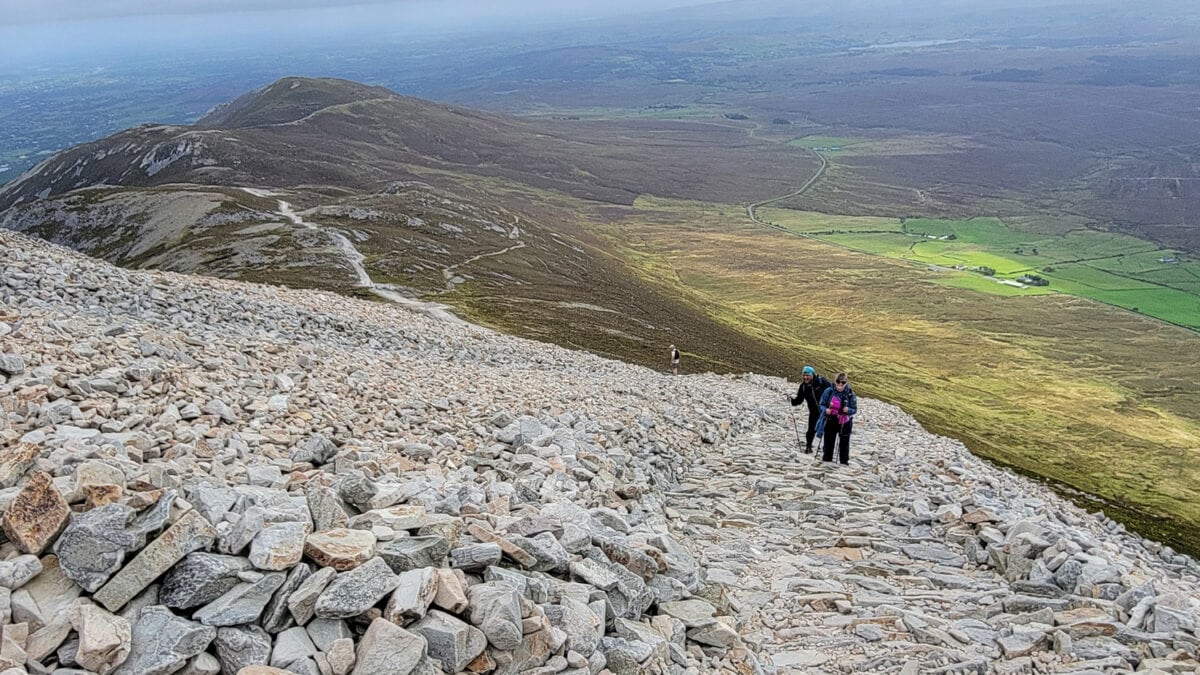
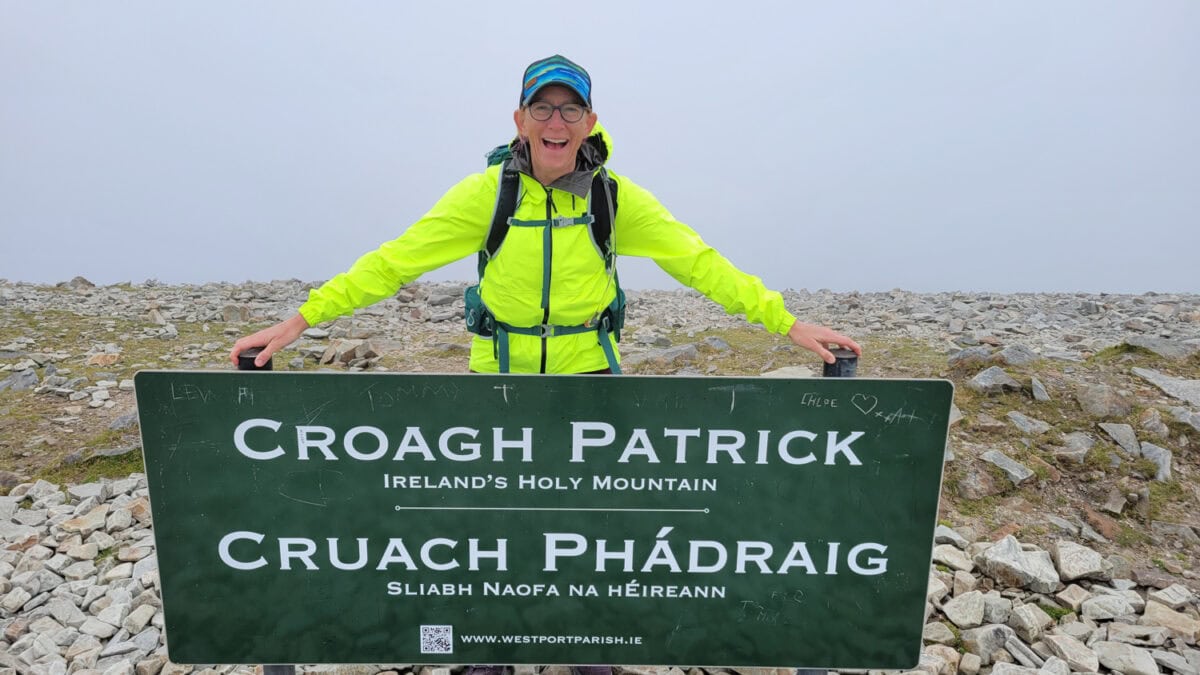
If you want a real mountain challenge, check out Croagh Patrick in County Mayo. Nicknamed ‘the Reek,’ Croagh Patrick is 2,507 ft and an important pilgrimage site for the Irish. It has a pyramid shape that overlooks Clew Bay near Westport. Some may say it looks menacing on a clear day, but it’s well worth the challenging hike!
It also has a fascinating history associated with Saint Patrick, who is said to have spent forty days fasting on the summit. You’ll find a statue of him at the base of the hike. You’ll find a small church on the summit for those who make it to the top. Croagh Patrick is climbed by thousands of pilgrims every year.
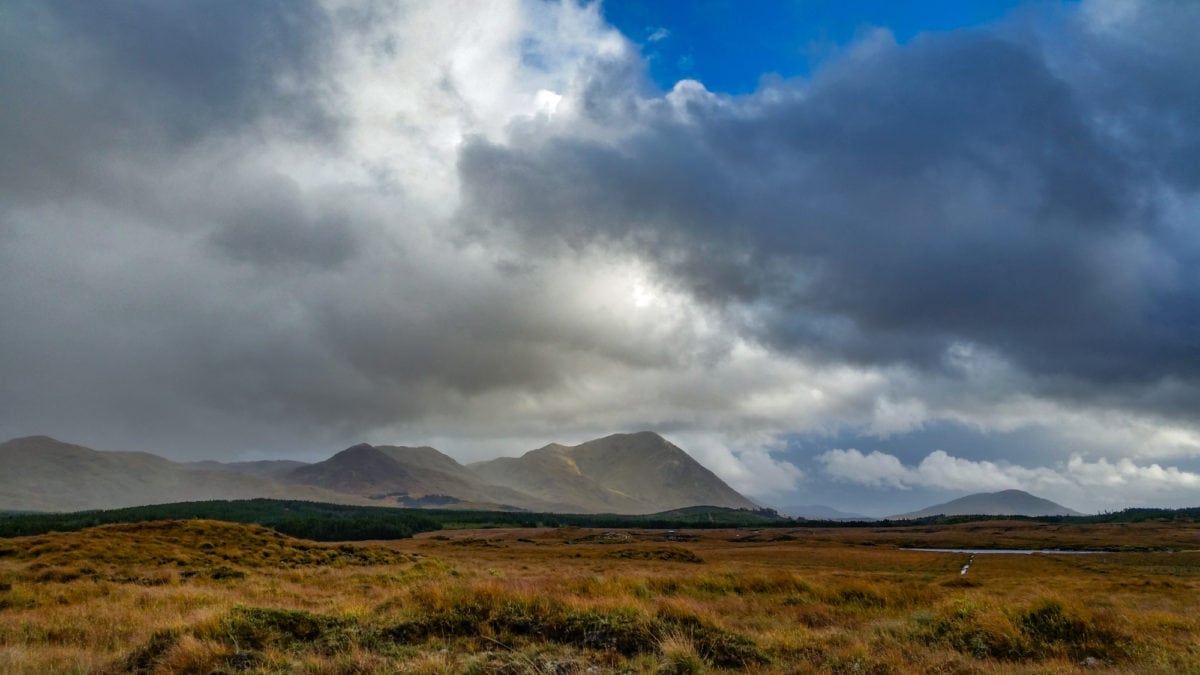
Best Places to See Mountains in Ireland
- Mourne Mountains, County Down: Located in Northern Ireland, the Mourne Mountains are known for their granite peaks, including Slieve Donard, the highest mountain in Northern Ireland.
- Wicklow Mountains, County Wicklow: These scenic mountains (often called the Garden of Ireland) are close to Dublin and offer excellent hiking opportunities with panoramic views of the surrounding countryside. The Wicklow Way is a multi-day hiking trail you can take through the mountains.
- MacGillycuddy’s Reeks, County Kerry: This mountain range includes Ireland’s highest peak, Carrauntoohil, and offers dramatic landscapes and challenging hikes.
- Connemara, County Galway: The Twelve Bens mountain range in Connemara offers rugged beauty and is a favorite destination for hikers and nature enthusiasts.
- Slieve Bloom Mountains, Counties Laois, and Offaly: These gentle mountains are ideal for leisurely walks and showcase rolling green hills and forests.
- Dingle Peninsula, County Kerry: This peninsula features the Slieve Mish Mountains and offers stunning coastal and mountain views.
- Achill Island, County Mayo: This island features the Slievemore and Croaghaun mountains, providing breathtaking coastal and mountain vistas.
Lakes and Rivers
Ireland’s picturesque lakes, such as Lough Neagh (Ireland’s largest lake) and Lough Corrib, along with meandering rivers like the River Shannon, add to the country’s scenic allure. Enjoy various recreational activities like boating, kayaking, and stand-up paddle boarding in serene and picturesque settings when you visit lakes and rivers in Ireland.
I love the Killarney Lakes region in County Kerry. Lough Leane, Muckross Lake, and Upper Lake are collectively known as the Killarney Lakes and offer stunning views in Killarney National Park. Make sure you don’t miss Torc Waterfall in Killarney National Park!
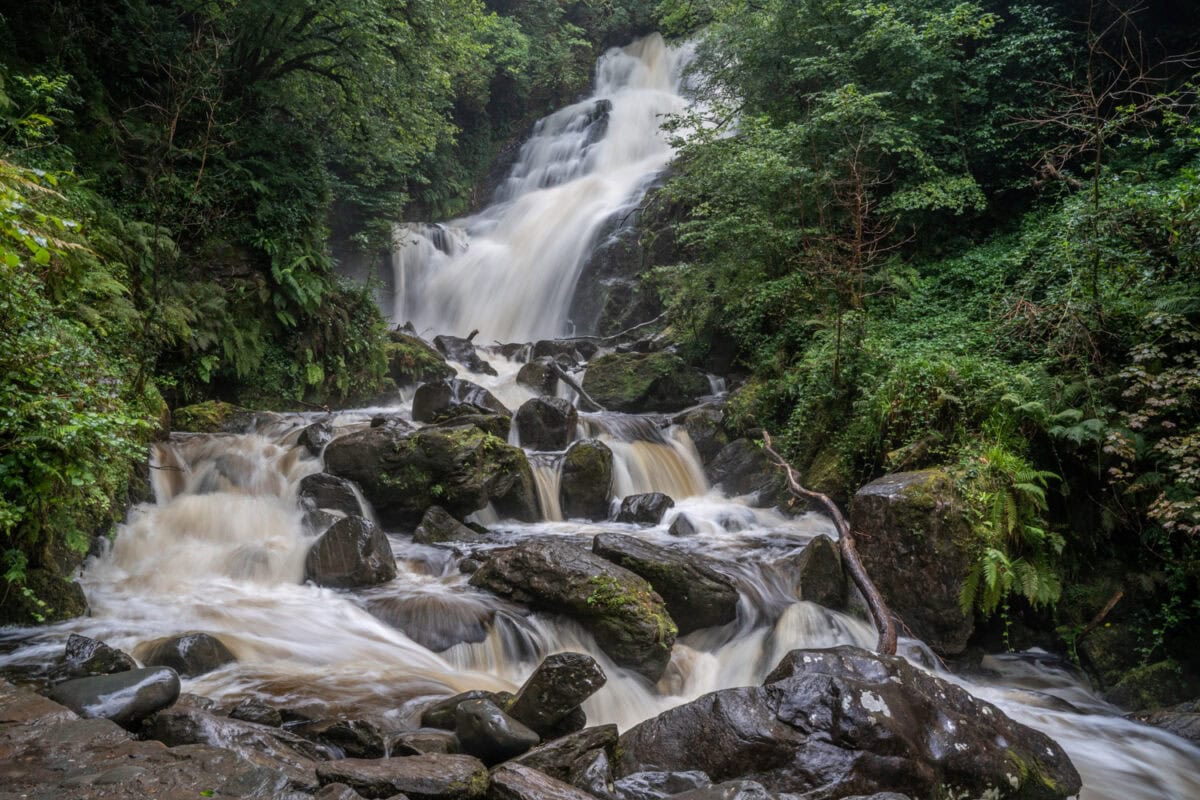
Lough Leane is near the Muckross House and Ross Castle – offering a lovely setting for an afternoon stroll through nature and Irish history.
I suggest you do a kayaking trip on the lakes where you can paddle through untouched islands, hidden caves, ancient oak and yew woods, and high limestone cliffs. It’s the best way to really see the lakes.
Best Places to See Lakes and Rivers in Ireland
- Lough Corrib, County Galway: This is the largest lake in the Republic of Ireland, offering picturesque scenery, boating opportunities, and nearby historic sites like Ashford Castle.
- Lough Derg, County Clare/Tipperary/Galway: This expansive lake along the River Shannon provides stunning views, fishing spots, and a tranquil environment.
- The River Shannon: Ireland’s longest river flows through several counties, offering opportunities for river cruises, water-based activities, and scenic walks along its banks.
- Lough Neagh, County Antrim: The largest lake on the island of Ireland, Lough Neagh is in Northern Ireland and offers birdwatching, fishing, and scenic walks.
- Lough Gill, County Sligo: Surrounded by picturesque landscapes, Lough Gill is renowned for its beauty and connections to W.B. Yeats.
- The River Boyne: This historic river flows through County Meath and is associated with ancient sites like the Hill of Tara and the Newgrange passage tomb.
- The River Nore: Flowing through Kilkenny and neighboring counties, the River Nore offers scenic spots for walking and kayaking.
- Lough Ree, County Westmeath: Part of the River Shannon system, Lough Ree provides boating and water sports opportunities.
- The River Moy, County Mayo: The main channel is 62 miles long and enters the sea at the town of Ballina. It stretches from the Ox Mountains in the east to Castlebar in the south and Loughs Conn, Cullin, and the Nephin Beg range of mountains in north Mayo.
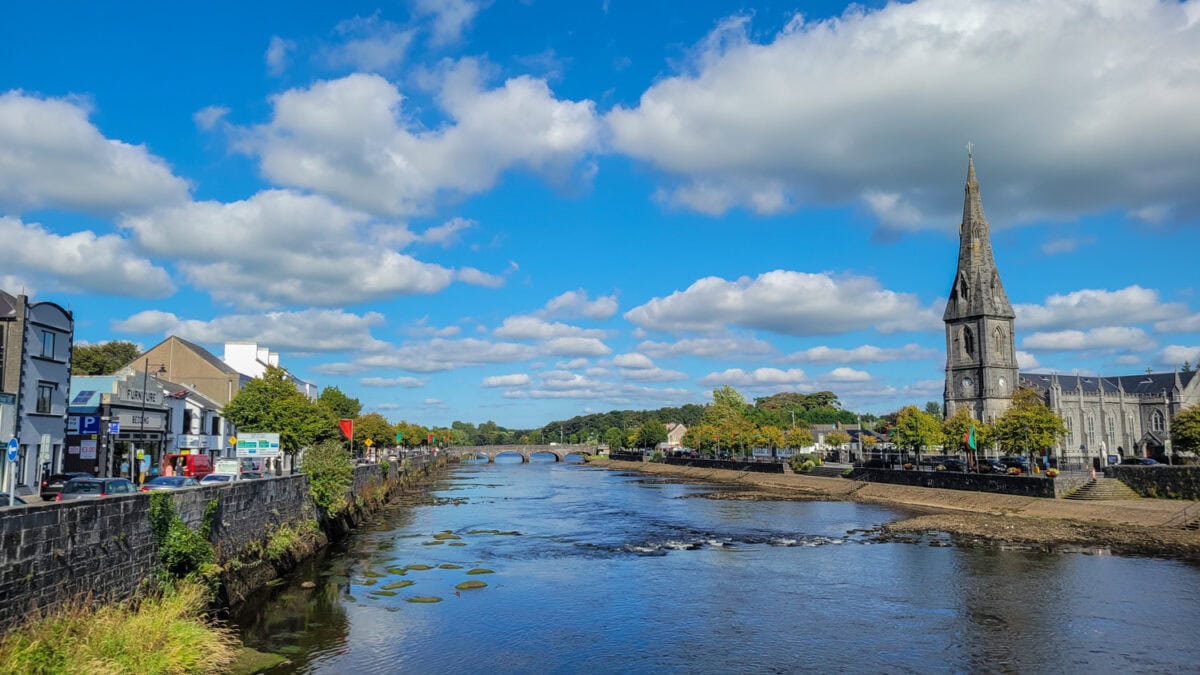
Forests and Woodlands
Ireland is dotted with charming woodlands and forests that provide a tranquil escape and opportunities for leisurely walks among amazing landscapes.
One thing unique to Ireland’s forests is the Fairy Trees. Part of the Irish folklore, these trees are believed to be home to magical creatures and serve as the gateway between worlds for mortals and that of the fairies in the other world. Fairy trees are normally Hawthorn trees or Ash trees. However, not all Hawthorn or Ash trees are fairy trees. A Fairy tree typically stands alone in a field, often is surrounded by a ring of stones, and has little strips of cloth tied on the branches that represent wishes. Regardless of whether the locals believe in fairies or not, no one will cut down a fairy tree for fear of bad luck.
In addition, keep your eyes peeled for miniature homes in the forests. These little ‘wee folk’ villages in forests around Ireland are cute and sacred.
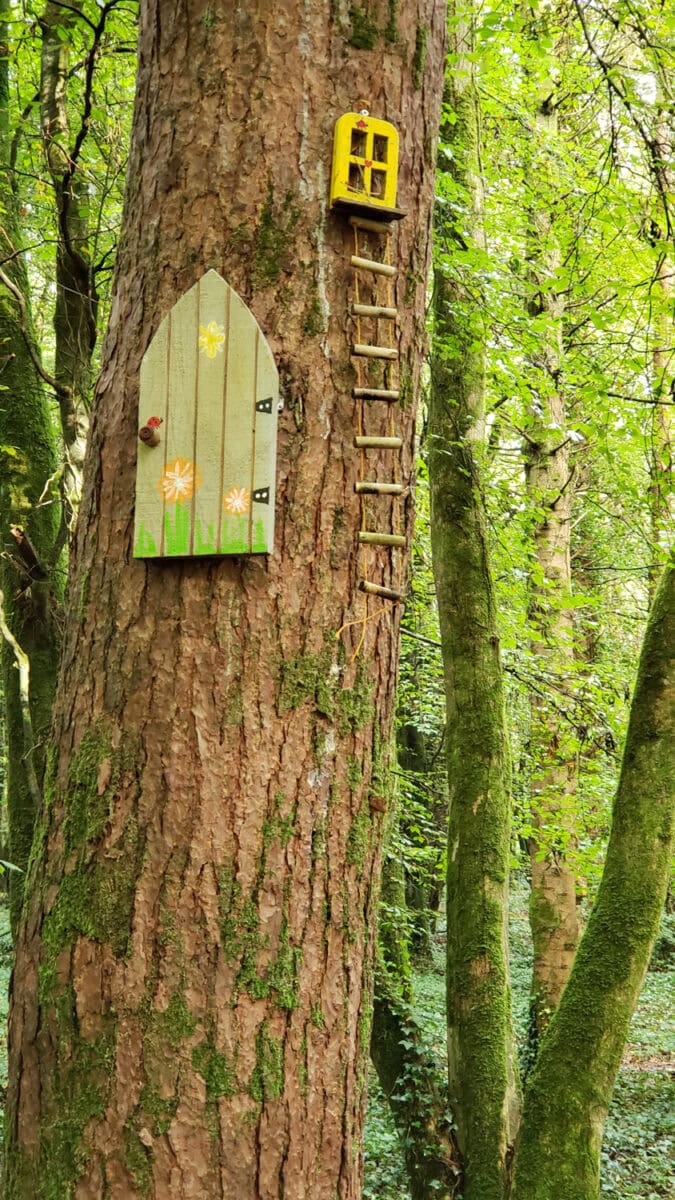
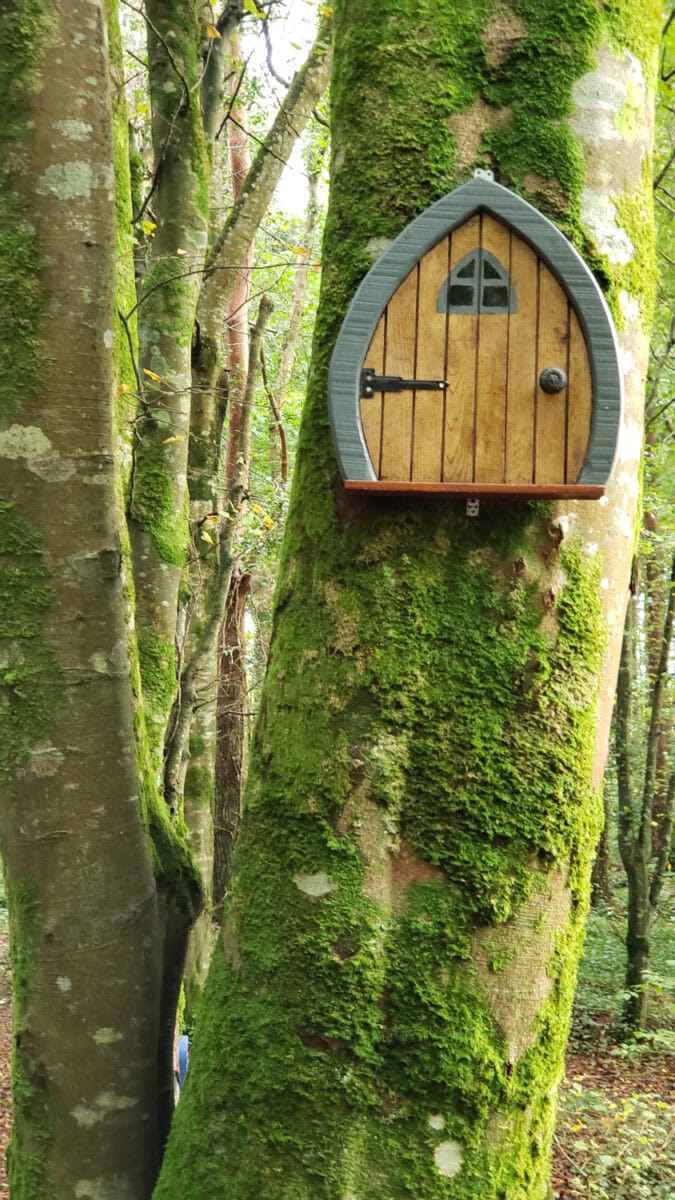
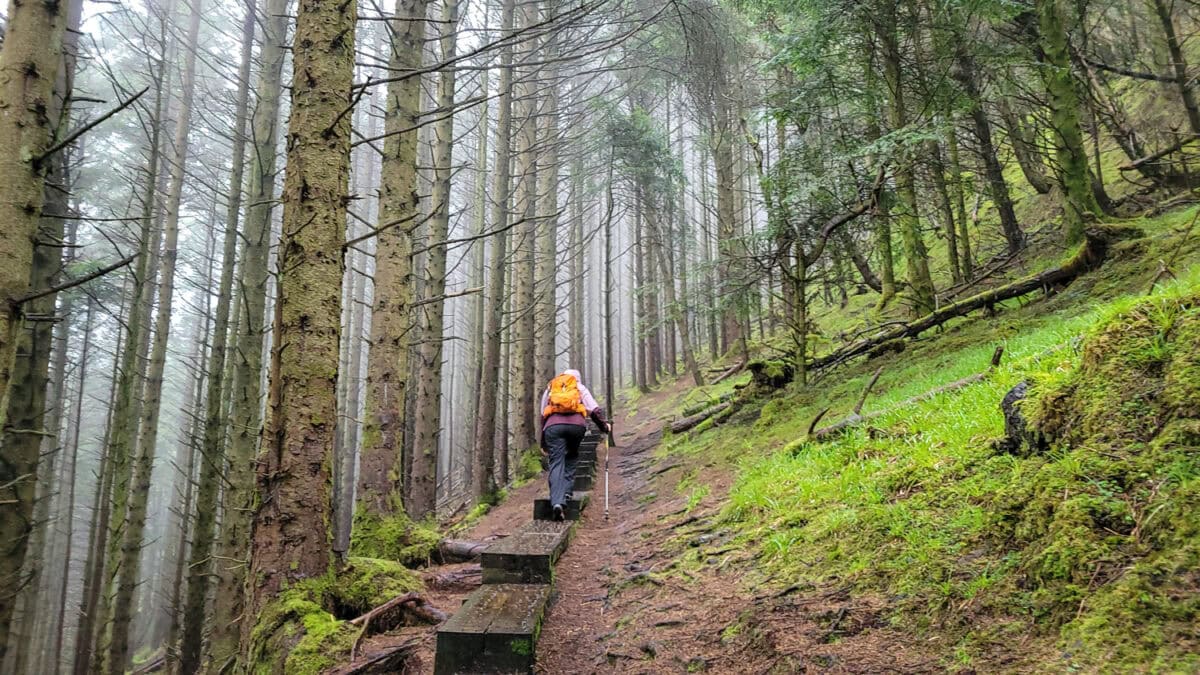
Best Places to See Forests and Woodlands in Ireland
- Glendalough, County Wicklow: Located within the Wicklow Mountains National Park, Glendalough’s ancient oak and beech woodlands surround the picturesque lakes, creating a serene and mystical setting.
- Killarney National Park, County Kerry: This expansive park features woodlands, lakes, and mountains, including the famous Muckross House and the enchanting Oakwood forest.
- Glenveagh National Park, County Donegal: Glenveagh’s diverse landscape includes wooded valleys, pristine lakes, and the vast Derryveagh Mountains, offering a peaceful escape in the northwest of Ireland.
- Coole Park, County Galway: Once the home of Lady Gregory and a gathering place for renowned literary figures like Yeats and Shaw, Coole Park boasts beautiful woodlands and gardens.
- The Slieve Bloom Mountains, Counties Laois and Offaly: This range features ancient woodlands with oak, birch, and pine trees, making it an ideal spot for hiking and exploring.
- The Curragh, County Kildare: Known as Ireland’s oldest oak woodland, the Curragh is steeped in history and provides a tranquil retreat near Dublin.
- Powerscourt Estate, County Wicklow: The Powerscourt Gardens include the Powerscourt Waterfall and scenic woodlands, offering a delightful day trip from Dublin.
- The Gougane Barra Forest Park, County Cork: Nestled in scenic mountains, this park features woodland trails, a stunning lake, and a charming chapel on an island.
- Don’t miss the most famous fairy tree at the Hill of Tara in County Meath. The magic here is ancient, going as far back as the Neolithic times. This was a sacred place of dwelling for the gods and an entrance to the Otherworld where wee folks and mythical creatures roamed freely.

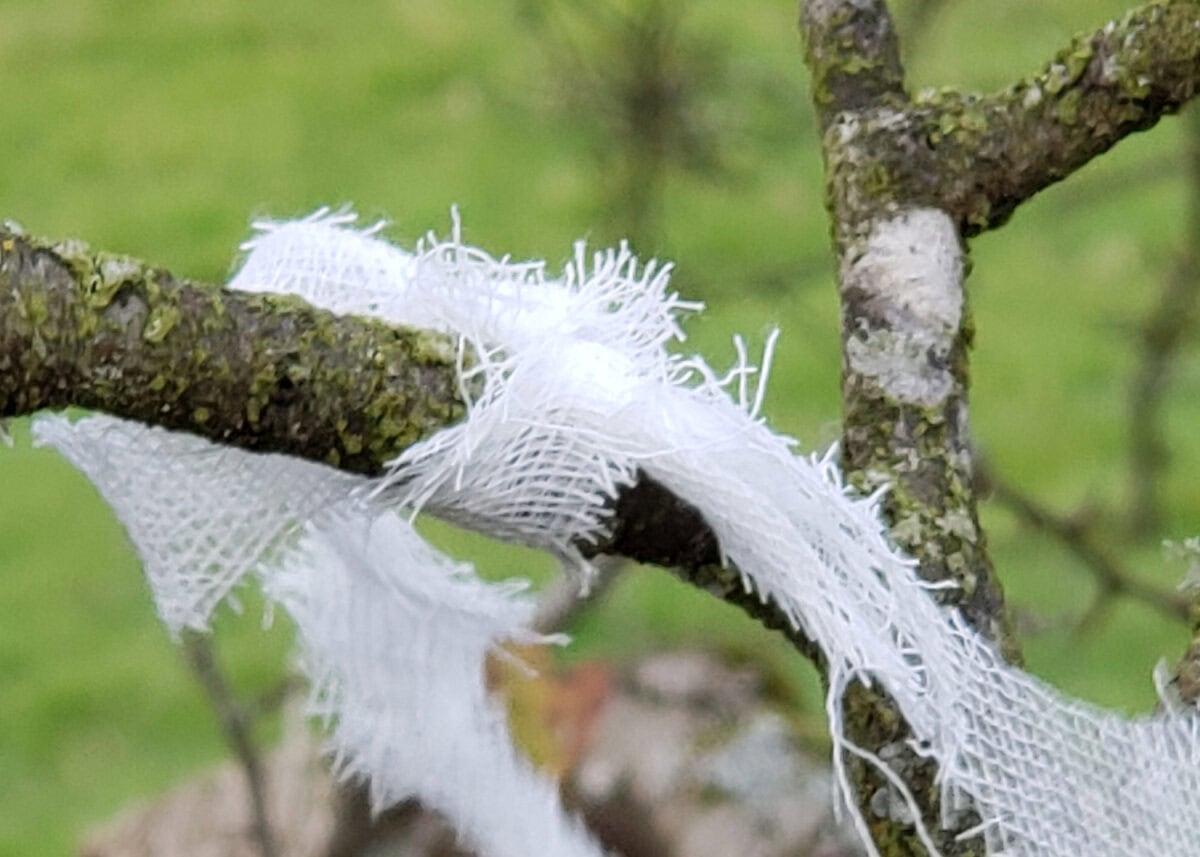
Historic Castles
Finally, many landscapes are graced with the remnants of ancient castles, adding a touch of history to the magnificent scenery. The country’s rich history is woven with ancient tales of Celtic mythology and centuries of cultural heritage. Evident in its historic castles and medieval ruins dotting the Irish landscapes.
The country’s castles tell tales of its past, and visiting them lets you step back in time. Whether you’re interested in medieval architecture, royal heritage, or captivating stories from the past, these castles offer an unforgettable glimpse into the history and Ireland’s cultural legacy.
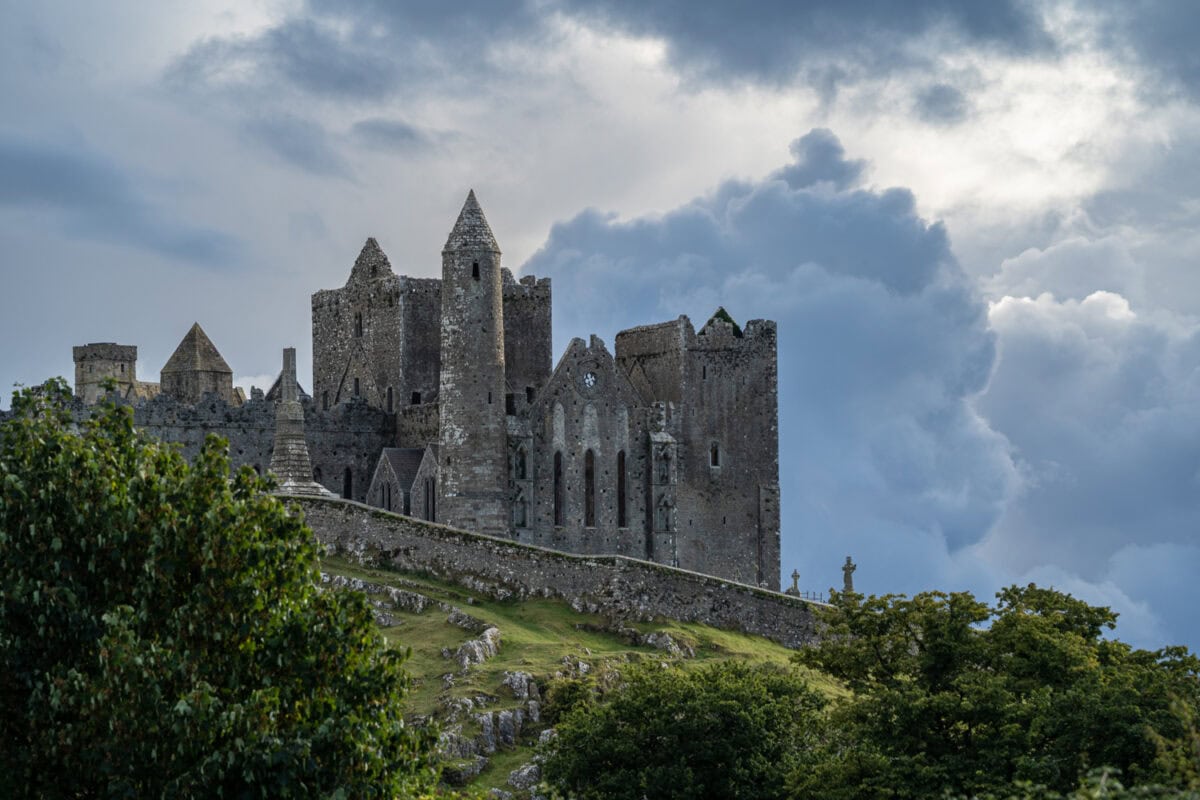
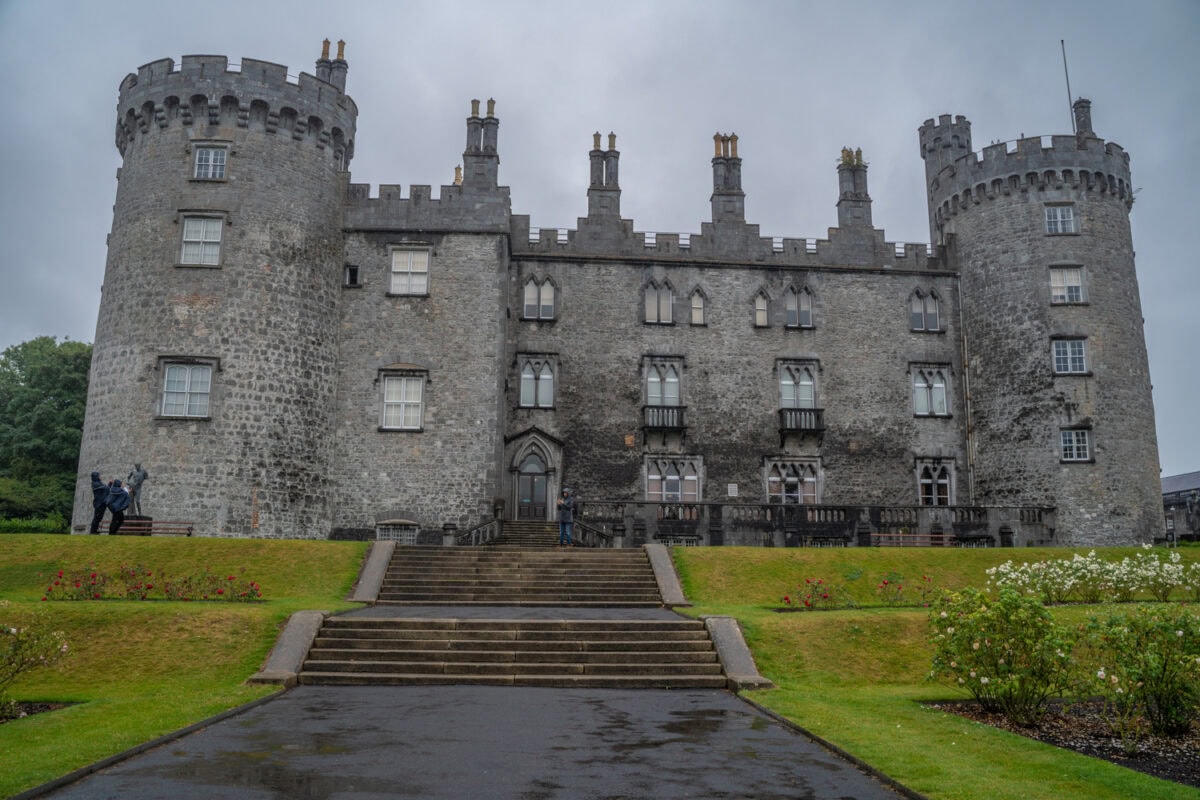
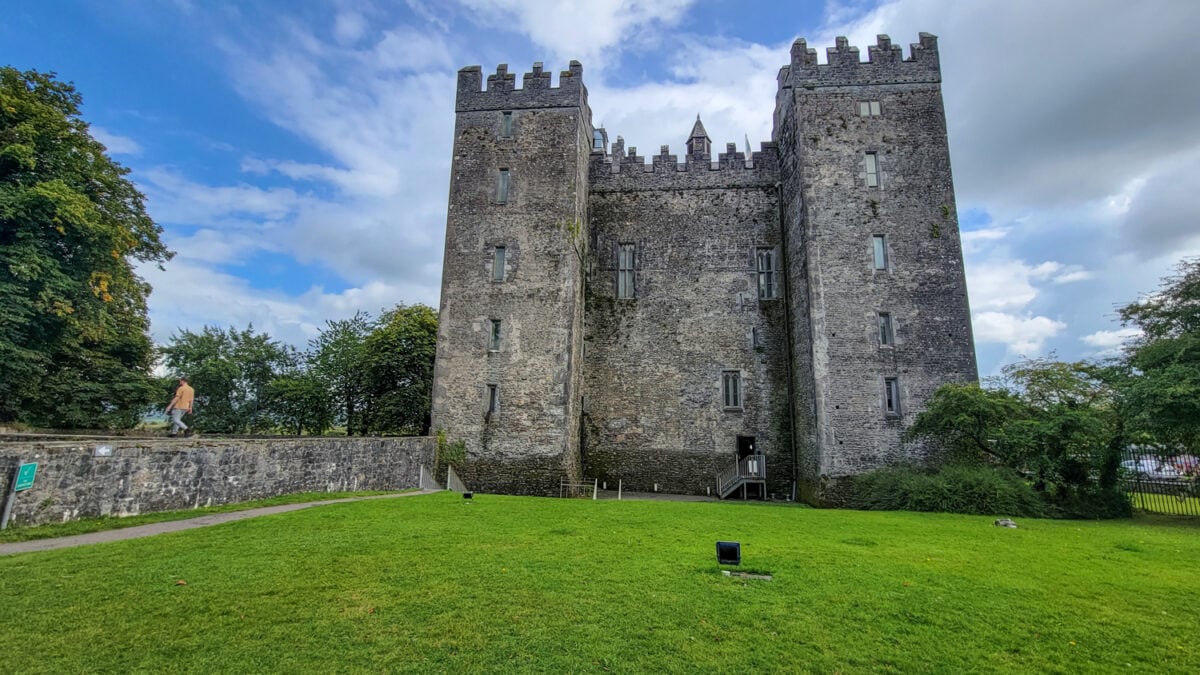
Best Places to See Historic Castles in Ireland
- Blarney Castle, County Cork: Famous for the Blarney Stone, this medieval fortress offers stunning gardens and panoramic views of the surrounding countryside.
- Dublin Castle, Dublin: Located in the heart of Dublin, this castle has been the center of the Irish government for centuries and is rich in history.
- Bunratty Castle, County Clare: This well-preserved medieval castle hosts folk park events and medieval banquets, providing an immersive historical experience.
- Kilkenny Castle, County Kilkenny: A striking symbol of Norman influence, Kilkenny Castle’s extensive gardens, and splendid interiors make it a must-visit.
- Kylemore Abbey, County Galway: Originally built as a castle, this stunning abbey is set against Connemara’s rugged landscape.
- Belleek Castle, County Mayo: Now a luxury hotel, event space, and museum. Belleek Castle has been a family home for most of its existence. Built between 1825 and 1831 in a spectacular Neo-Gothic style.
- Dunguaire Castle, County Galway: This picturesque castle on the shores of Galway Bay is one of Ireland’s most photographed landmarks.
- Rock of Cashel, County Tipperary: A historic site with a collection of medieval buildings, including a cathedral and round tower, set atop a limestone outcrop.
- Doe Castle, County Donegal: This fortress, perched on the coast, provides stunning views of the Atlantic Ocean and the surrounding countryside.
Empty Beaches
Ireland has 1,970 miles of coastline, a country with this much coastline is bound to be full of beautiful beaches. There are so many hidden little beaches along Ireland’s Wild Atlantic Way. The cold waters of the Atlantic Ocean however tend to scare people away leaving the beaches relatively empty.
You’ll find rocky beaches in the southern part of the Atlantic Coast. Meanwhile, in County Sligo, you find large flat expanses of beautiful sand. Here you’ll often find daring surfers taking on the wild Atlantic.
Best Places to Experience Empty Beaches in Ireland
Enniscrone Beach in County Sligo is a great, flat beach that is perfect for long beach walks. Additionally, this is one of the best beginner surfing beaches in Ireland. There are a number of surf schools in this area.
Inch Beach in County Kerry is popular with surfers, anglers, and swimmers. This is a Blue Flag Beach, with lifeguards during the summer season. You’ll also find surf schools, water sports equipment, and wetsuit hire.
Keem Beach in County Mayo on Achill Island is often given the title of Ireland’s best beach. Its popularity has increased since the release of the movie Banshees of Inisherin where it had a ‘starring role.’
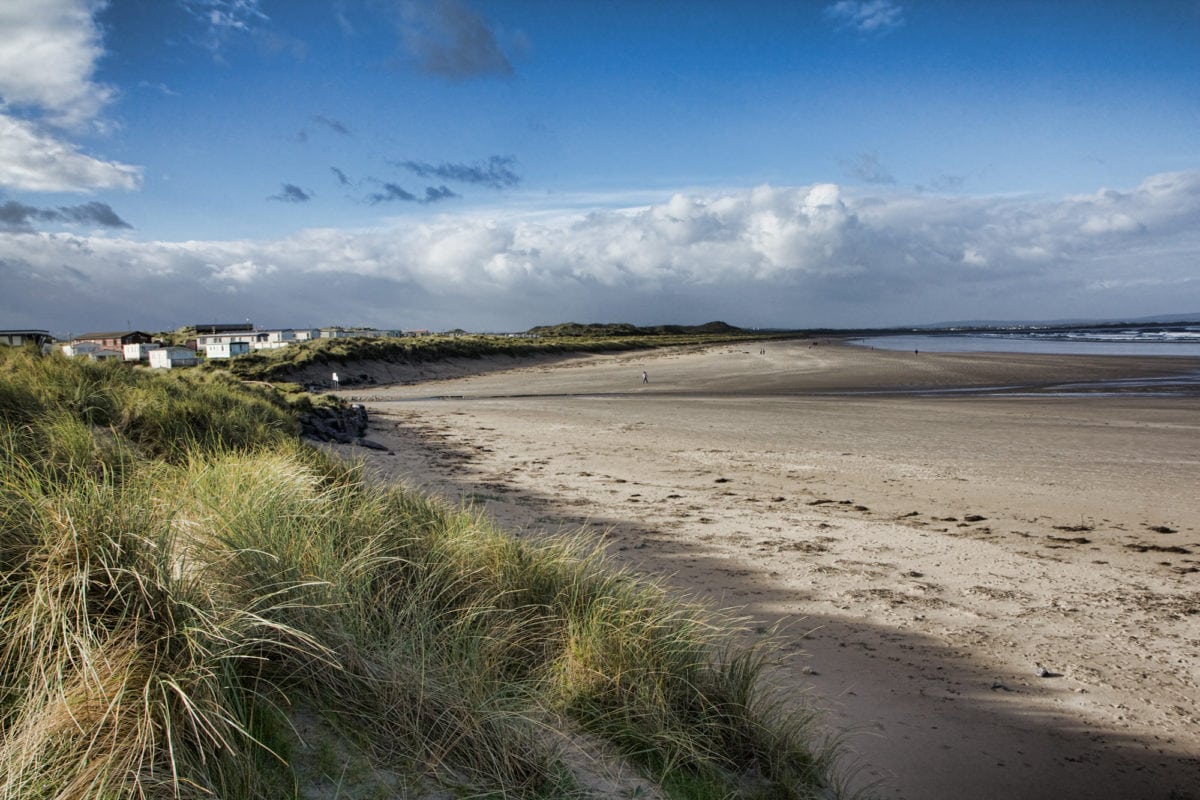
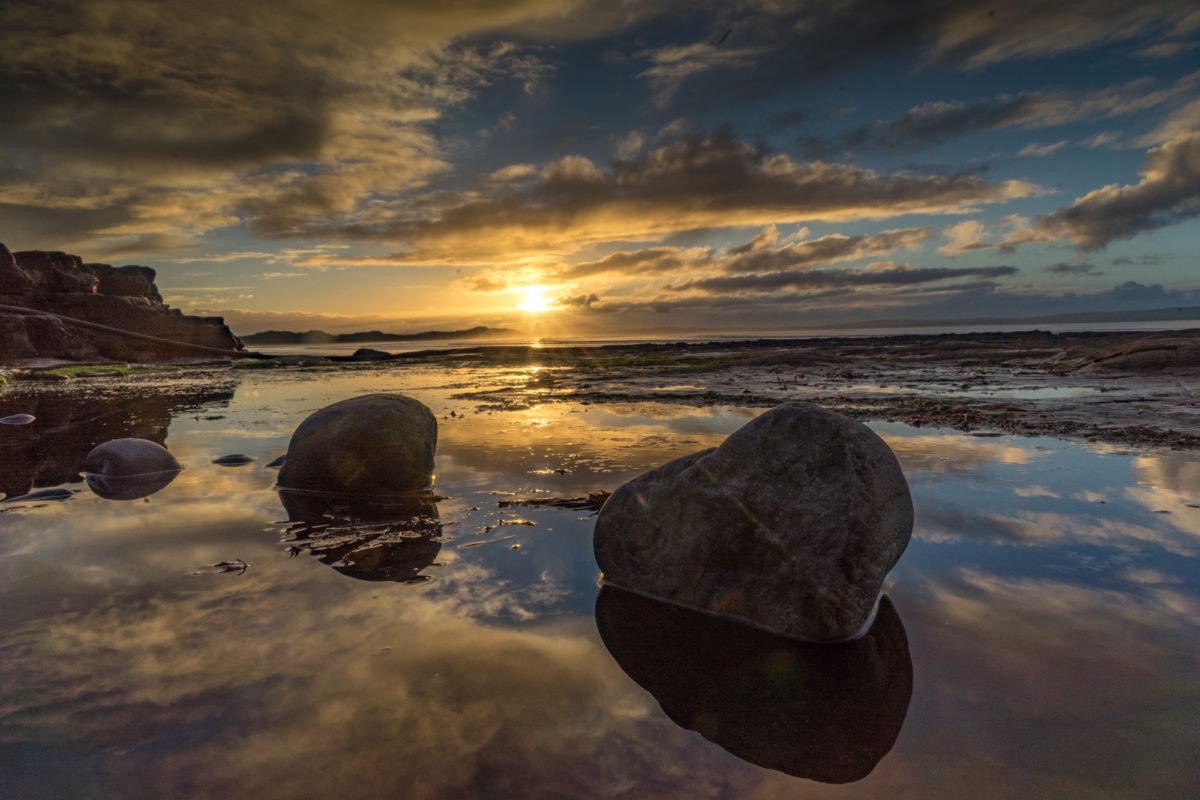
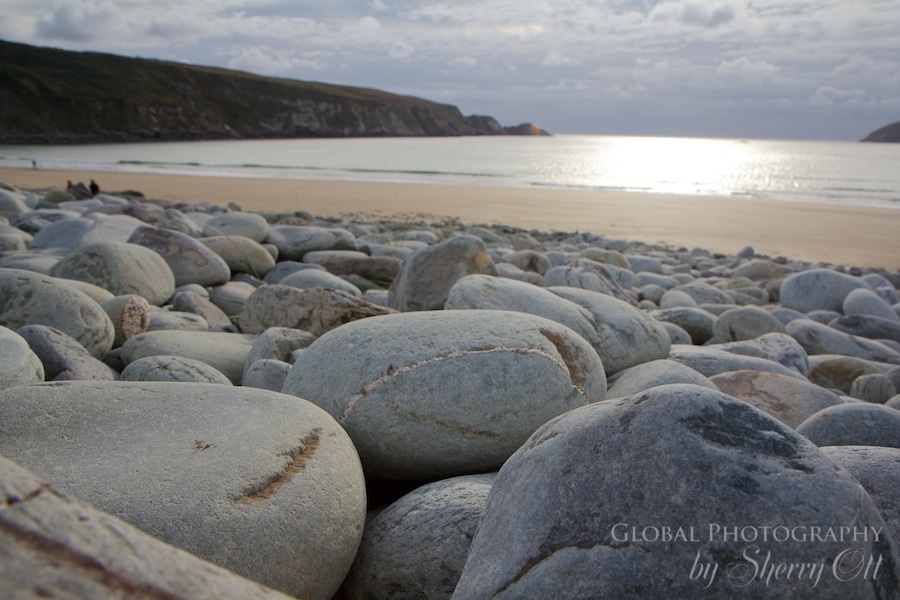
Some other beautiful Irish beaches to visit:
- Portsalon Beach in Donegal
- Streedagh Beach in Sligo
- Silver Strand in Mayo County
- Dog’s Bay in Galway
Ireland’s Unique Karst Landscapes
Picture this: you’re standing in the heart of County Clare on the west coast of Ireland. The rugged landscape unfolds before your eyes like an ancient tapestry woven by Mother Nature herself. Welcome to the Burren, where limestone is king and rocks reign supreme.
The Burren is primarily composed of carboniferous limestone. A type of rock formed around 350 million years ago when Ireland was part of a tropical ocean floor. Talk about climate change.
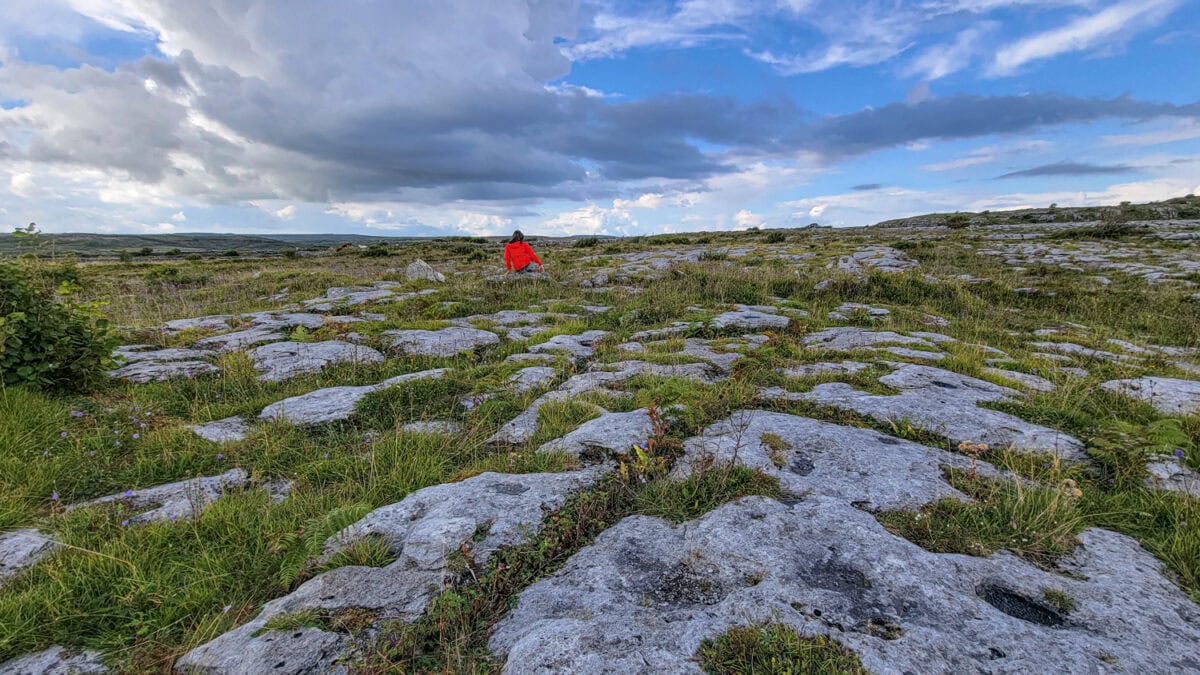
The Burren also boasts some seriously impressive karst landscapes. Karst refers to a type of terrain characterized by sinkholes and underground drainage systems. In simpler terms: lots of holes and caves perfect for adventurous souls.
Best Place to See Karst Landscapes
Burren National Park is the perfect place to experience the Karst landscape. Vast expanses of flat slabs resemble something out of an alien landscape. There you can do hikes, and go caving.
Whatever you do, don’t miss the Poulnabrone Dolmen – a prehistoric megalithic monument. It is one of the most famous and well-preserved dolmens in Ireland. It’s considered a significant archaeological and historical site, so it’s a must-see. The Poulnabrone Dolmen consists of a large, flat capstone balanced on two upright stones, forming a sort of portal-like structure. The monument is believed to date back to the Neolithic period, around 3800 to 3200 BCE. Poulnabrone Dolmen itself contained the remains of multiple individuals, including adults and children.
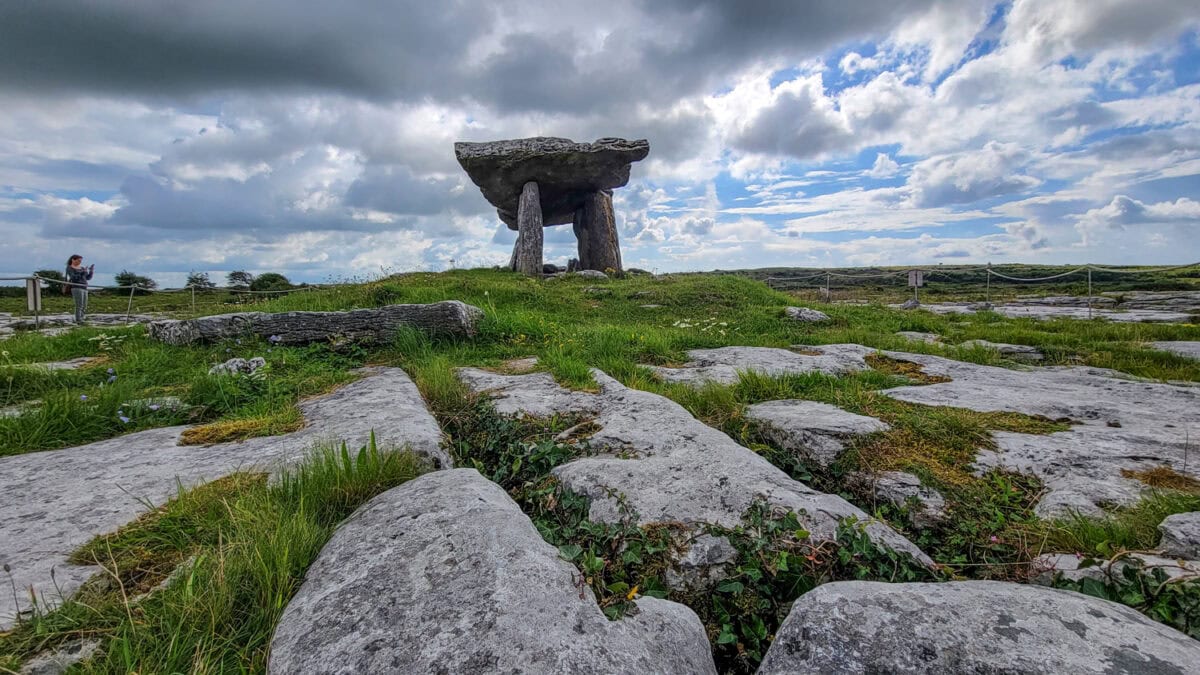
Hike the Burren Way. This multi-day hike takes you through the best of the Karst landscapes in County Clare. Not only does it go through Burren National Park, but it also goes by the famous Cliffs of Moher (the best way to see the Cliffs of Moher is to hike them!). You stay in small villages like the cute town of Doolin. There you can listen to traditional Irish music and enjoy the locals. I hiked a portion of the Burren Way on one of my visits. To this day, it is one of the most memorable landscapes I have seen in the world.
See Them All Along the Wild Atlantic Way
The easiest way to see all of these stunning landscapes is to simply drive the Wild Atlantic Way. It is a bucket list destination on its own, showcasing the dramatic Irish landscape. I let out gasps more than once as I rounded corners along the Wild Atlantic Way.
This long coastal route stretches along Ireland’s western and northern coasts, spanning over 1,500 miles (approximately 2,500 kilometers). There are numerous cliffs, pristine beaches, and charming coastal villages to explore along the route. Each stop along the way offers a unique and memorable experience for any nature enthusiast and adventure seeker. I drove the Wild Atlantic Way solo and it was one of the best road trips I’ve taken.
Best Places to Stop Along the Wild Atlantic Way
- Cliffs of Moher, County Clare
- Dingle Peninsula, County Kerry
- Ring of Kerry, County Kerry
- Connemara, County Galway
- Skellig Islands, County Kerry
- The Burren, County Clare
- Downpatrick Head, County Mayo
- County Donegal – Glenveagh National Park, Slieve League, Fanad Head
- Achill Island, County Mayo
- Ben Bulben, County Sligo
- Giant’s Causeway, County Antrim
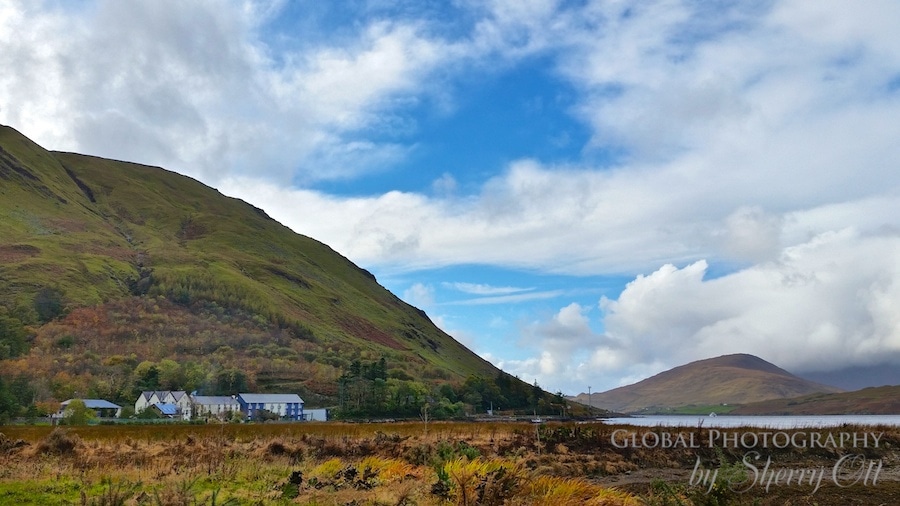
See Ireland’s Spectacular Landscapes For Yourself!
I take you to many of these places on my Ottsworld Tours I do in Ireland. You can see the latest Ireland tours I’m running here.
If my Ottsworld Ireland tours don’t coincide with your travel plans, then be sure to check out Ireland Walk Hike Bike’s various tours around the Emerald Isle. This local company is the one I use to design my tours and they are like family to me!
Plus – if you use the code OttsWorld2023, you’ll get 5% off your trip!
Here are some of their tours that go through the Irish landscape I’ve mentioned:
And finally – I’ll leave you with a few of my other favorite Ireland landscapes that don’t necessarily fit into these other groups. I hope you’ll be inspired to go see these landscapes in Ireland yourself!
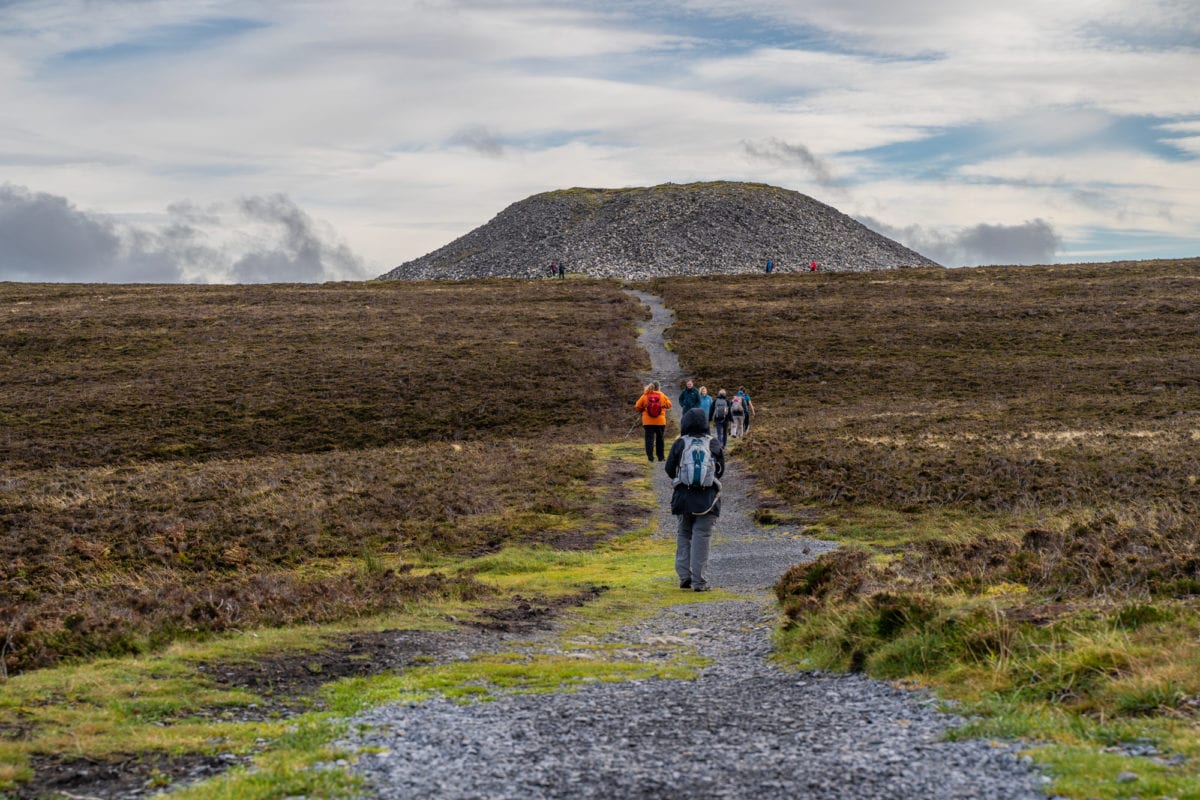
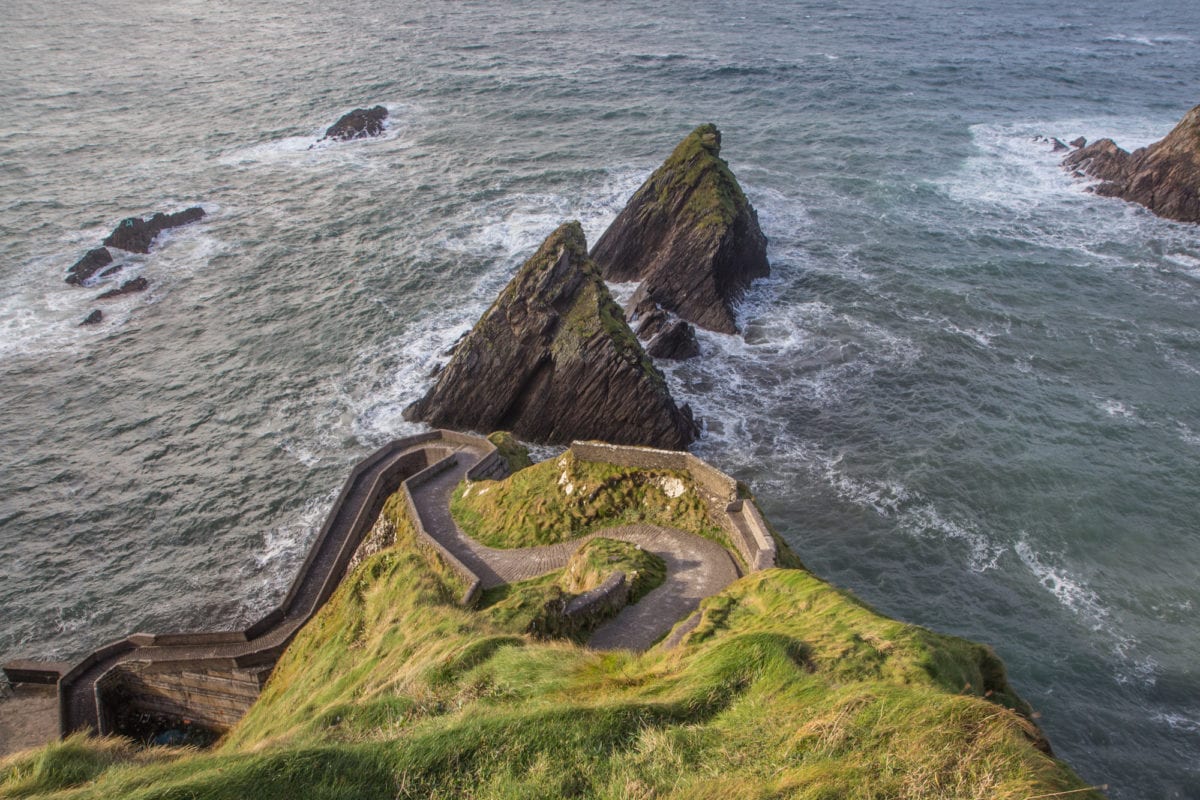
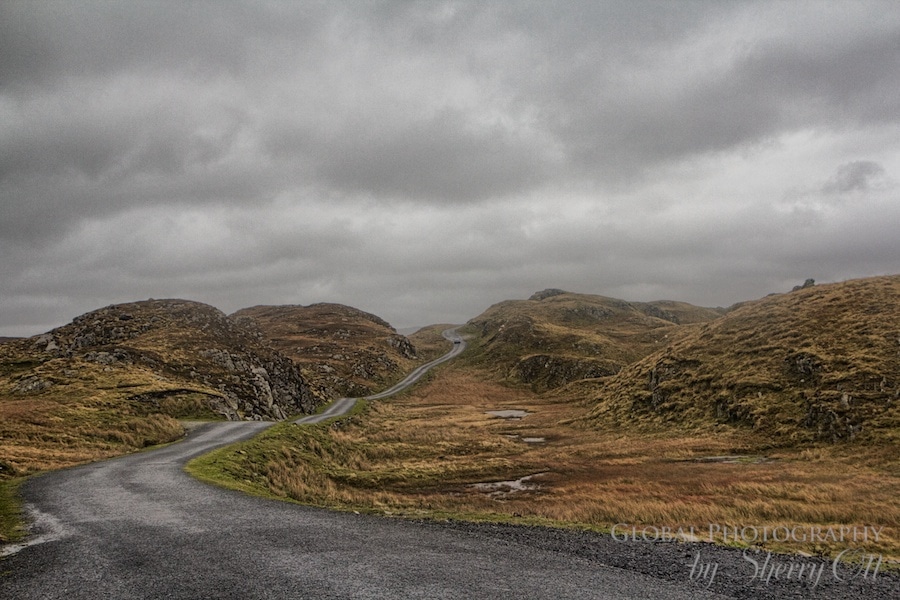
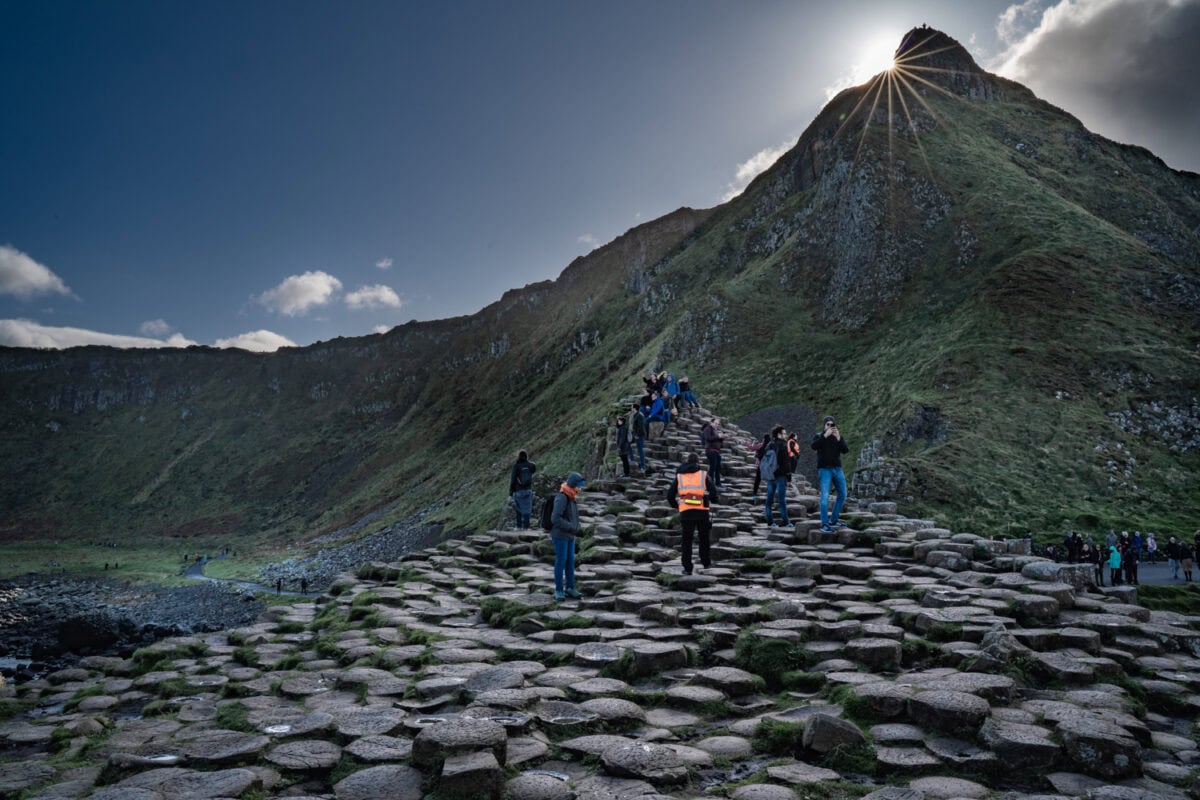
5 Travel Essentials for your Ireland Trip
- Klean Kanteen 16oz (w/ Café Cap)
- Eagle Creek Packing Organizers
- Wallaroo Hats
- Peak Design Tech Pouch
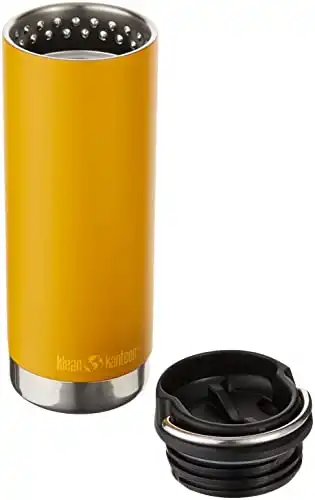
One of the things I like about Klean Kanteen is that they have a system where you really just need to purchase one insulated bottle and then use their interchangeable caps for your different needs; caps for sipping drinks, straws lids for cold drinks, or chug caps. One bottle is really all you need!
I earn a commission if you click this link and make a purchase, at no additional cost to you.
10/11/2023 05:02 am GMT
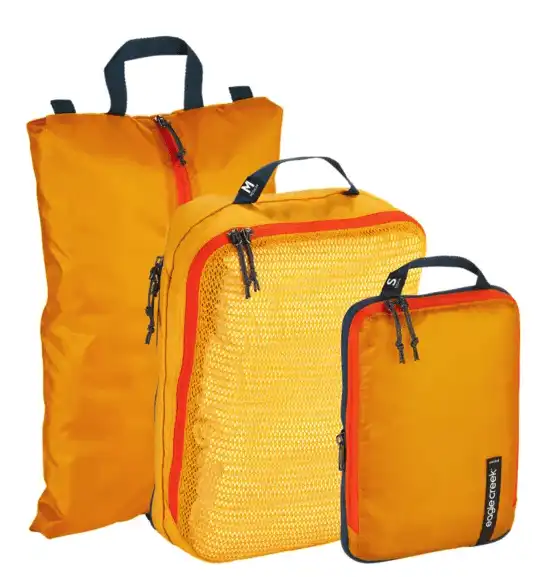
Packing organizers are the key to packing happiness – they turn your bag into a piece of furniture. I use mine to organize my different types of clothes, just like I would a dresser; one has t-shits, one has pants, one has sweaters. You get the idea – it’s packing bliss. I use and love Eagle Creek packing solutions.
Buy Now
I earn a commission if you click this link and make a purchase, at no additional cost to you.

I love all of their styles and normally always have at least 2 of their different hats with me on every trip I take! All of their styles offer superb sun protection. The Skin Cancer Foundation recommends the material of every Wallaroo hat with a UPF rating and a 3+ inch brim as an effective UV protectant. Plus – they have so many fashionable styles!
Use my Discount code, OTTSWORLD20, for an extra 20% regular priced items!
Buy Now
I earn a commission if you click this link and make a purchase, at no additional cost to you.

Whether storing cables, everyday gear, or travel essentials, Tech Pouch offers unrivaled organization and ease of access. Origami-style pockets create enormous spatial efficiency, letting you pack more into a smaller space while keeping your items neatly organized and easy to find.
Buy Now
I earn a commission if you click this link and make a purchase, at no additional cost to you.
Disclosure: Part of my Wild Atlantic Way Road Trip was sponsored by Failte Ireland. However, all of the opinions here are my own.


